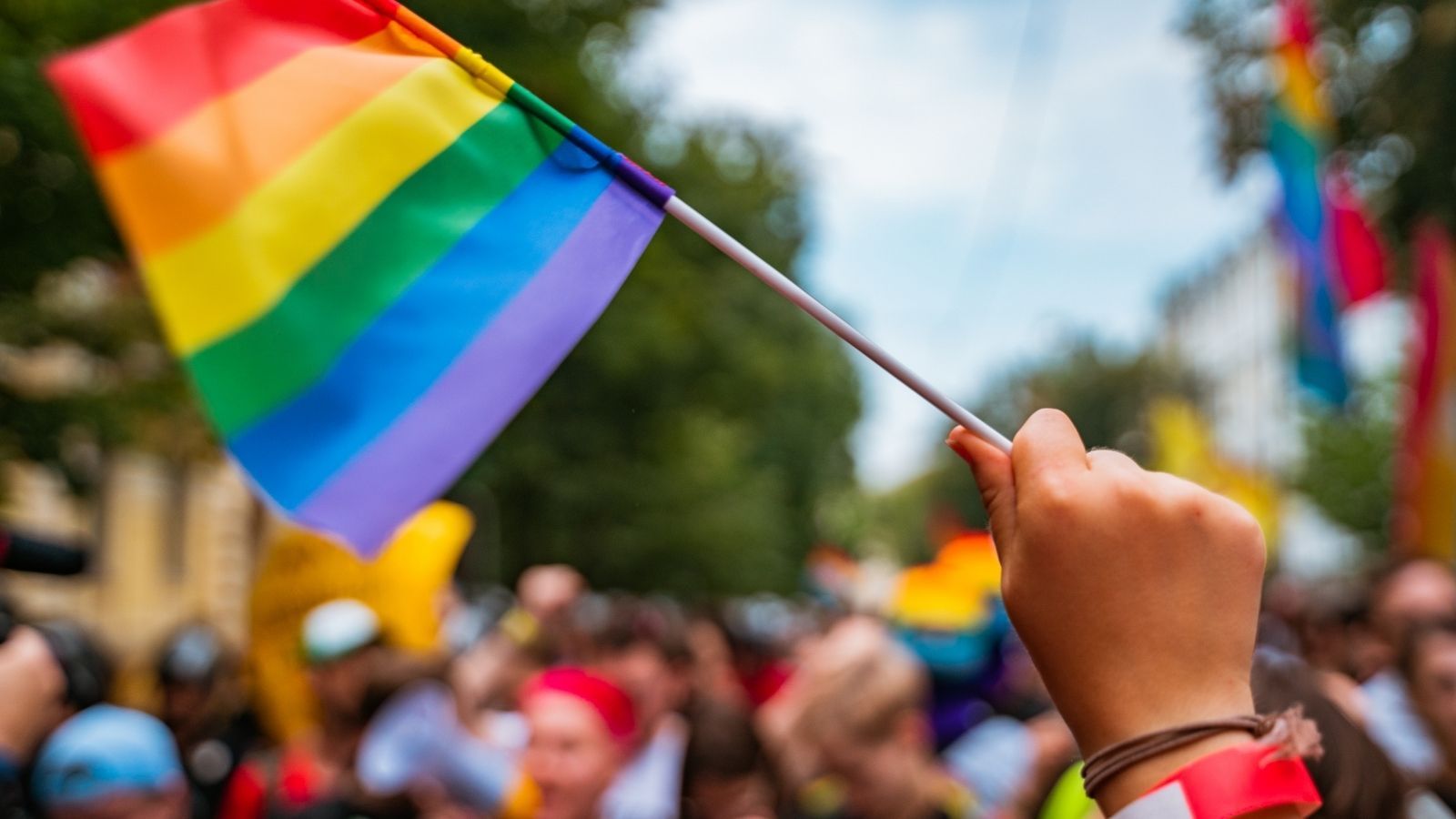The 100 Most Influential Queer Books of All Time
Visibility. It’s one of the most crucial needs of the queer community. To be understood, to be accepted, the LGBTQIA+ community needs first to be seen. This has meant that centuries of authors writing about the experiences, love, and pain of the queer community have been crucial in making progress towards a radical acceptance.
From the delicate art form of the semi-autobiographical novel — a life story veiled behind fictional names and twists — to the roar of poetry to a deep dive into the history that has too often been erased and purged, queer literature has helped to challenge, move, and shape generations of readers.
As a pansexual, demisexual cis woman on my way into another Pride Month, researching and crafting this list was a singular joy. I have many books to put on hold at my local library. Many stories to encounter. Many histories to educate myself on.
Because queer texts help to increase our visibility to the “outside” world, but they also increase internal visibility and acknowledgment. Today, transphobia is rampant among the queer community, and there are still plenty of issues (biphobia, acephobia), histories, and experiences that the best-educated queer person needs to be willing to open themselves up to and learn more about. The joy of queerness is that it is impossible to contain, that it contains multitudes.
So challenge yourself this June. If you’ve read the classics, dive into contemporary fantasy or poetry — look into the futures that queer writers are imagining for us. If you’ve read the new stuff, take a peek into the classics, or dare yourself to read a history. If you don’t know enough about asexuality or need to dig deeper into trans-ness and the experience of being gender queer, now is the time.
And before we get into it, I should note: this list was not easy to make and not easy to narrow down. If you are determined that I’ve missed something crucial, please tweet at me, and I’m happy to hear about it. The simple truth is that some of the books that were most influential towards my own queer awakening haven’t made this list, simply because a list like this is a gigantic task. I’m blessed that we have enough seminal, crucial queer literature that it was painful to to “only” feature 100 books on this list, and I’m sure each reader will have several books in mind that I was foolish to leave out.
Note: I included content warnings where I was able, but things slip through the cracks, and I myself was not able to read every book on this list, particularly in the nonfiction category. As most (all) of these books have some kind of homophobia, I have not noted that warning specifically under each book. Please do additional research if you have specific concerns.
Fiction: Semi-Autobiographical, Fantasy, and More
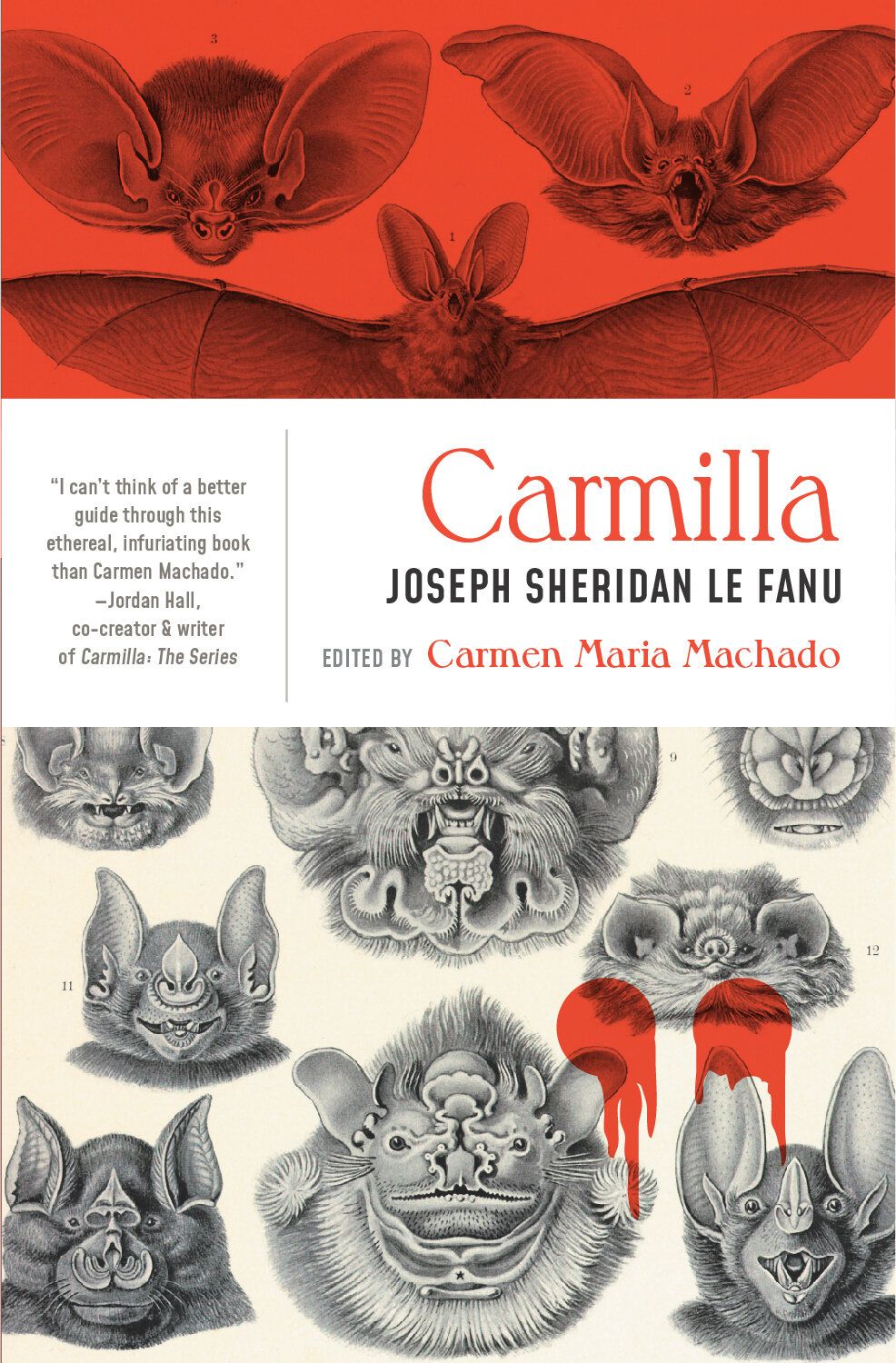
Carmilla by J. Sheridan Le Fanu (1872)
A woman named Carmilla is entrusted to Laura’s family for the summer, and despite increasing nightmares, Laura finds herself falling irresistibly for Carmilla’s beauty. I specifically recommend the version edited by Carmen Maria Machado, who writes in her introduction of the real lesbian love affair and historical letters that Le Fanu used to construct this story, letters that were more explicitly about love. Machado’s footnotes add a vividness and life to the text, while pointing out queer subtext. In addition, this version is beautifully illustrated by Robert Kaiza. (Read more about how this edition is a reclamation here.) While Carmilla is a monstrous lesbian preying on Laura, this text is still a classic that has inspired web series, films, and music; sparked ideas for authors including Anne Rice; and provided inspiration for vampiric women in games and anime such as Castlevania.
The Picture of Dorian Gray by Oscar Wilde (1891)
In this famous novel, a young man is willing to sell his soul if it means retaining his youth and beauty. Despite efforts of his editors to downplay the homoeroticism of the book, it is still intensely queer, and in the modern age, Gray’s queerness seems evident and obvious. It’s a powerful book of beauty, youth, vanity, and what it means to be good. Wilde is one of the most famous queer icons of history. After making the mistake of prosecuting his lover’s father for libel, Wilde was arrested and convicted for gross indecency with men, his private life drawn out and exposed in a scandalous and much discussed trial. He died suddenly of meningitis in 1900 in Paris, only three years after his release.
Content warnings for suicide, anti-Semitism.
Two Virgins in the Attic by Nobuko Yoshiya, untranslated (1919)
Yoshiya is considered a pioneer of Japanese lesbian literature. Her early work, Flower Tales, is a series of 52 stories about romantic friendships, longing, and unrequited love. Her second work, Two Virgins in the Attic, was semi-autobiographical, a book about a relationship between two female roommates who eventually decide to live together permanently, spurning what was at the time an intensely male-oriented society.
The work revealed Yoshiya’s own queerness, and the author was open in her androgynous style, fierce independence, and queer personal life. She was open about her personal life and her relationship with life partner Monma Chiyo (in 1957, she adopted Monma as her daughter, because it was the only legal way to ensure that they could share property or make medical decisions for each other). Even as an out lesbian and independent woman at a time when both were rare, her work was very popular — she was one of modern Japan’s most commercially successful authors. Tragically, this book is not available in translation.
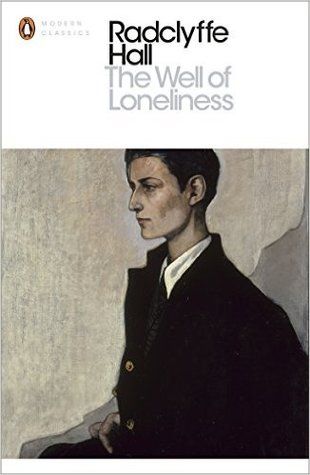
The Well of Loneliness by Radclyffe Hall (1928)
Published in 1928, this thinly veined story of Hall’s own life — a story of a lesbian struggling for acceptance and love, cast from her home — was banned on its publication. Hall went by the name John, and identified as an “invert.” Like her, main character Stephen is a tough, butch writer struggling with love and acceptance but determined to write her truth, knowing that her work and writing is what can best help change the perception of the queer community. Although the book wasn’t sexually explicit, it was still given an obscenity trial in the UK, and all copies were destroyed — the U.S. only allowed publication after a long court battle. The novel’s sympathetic and vulnerable depiction of sapphic women makes it a bold predecessor to much lesbian fiction that would eventually follow.
Content warnings for suicide, alcoholism.
Orlando: A Biography by Virginia Woolf (1928)
One night, Orlando, a male nobleman, goes to sleep for several days, and wakes up in a woman’s body. This novel by Woolf is a bold feminist story that satirized gender roles, showing that they are taught rather than in any way inherent to biology. Orlando has the same mind and soul as a woman, but the way she is treated by those around her in turn changes the way she acts. Using the more fantastical elements, Woolf is able to use this 1928 novel to push into more radical topics, in its discussions of gender, sexuality, transition, and pronouns. The novel was partially inspired by Woolf’s lover Vita Sackville-West, a gender-bending, queer, and unconventional woman. The novel was received quite well on its publication, a contemporary success.
Content warnings for use of the g-slur, Orientalism, exoticizing of cultures.
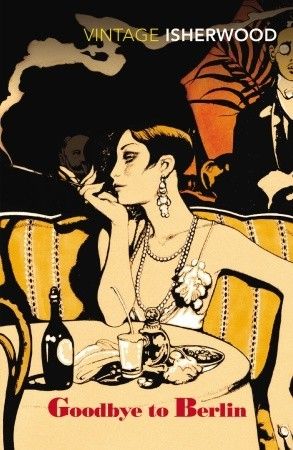
Goodbye to Berlin by Christopher Isherwood
Did you know that Cabaret was based on a book that was also semi-autobiographical and based nearly entirely on real people and events? No, me neither. But it was. Isherwood was a gay man living in pre-Nazi, Jazz Age Berlin, interacting with the eclectic, queer, and poor — many of them marginalized people who would later be at the greatest risk of persecution from the Nazis. While there, he befriended young flapper Jean Ross, shared an apartment with her, and would help her get an abortion that she nearly died from. He fled Germany as it descended into Nazi rule. His real experience became inspiration for Goodbye to Berlin. It’s considered a classic, although many real-life figures on whom characters were based have since lamented the tweaks he made to their lives or dialogue. Isherwood himself later felt ambivalent about the commercial success of his writings that touched on real suffering that he, as a foreigner, could only hint at.
Content warnings for anti-Semitism, abortion, medical trauma.
The City and the Pillar by Gore Vidal (1948)
Jim Willard and best friend Bob Ford decide to take a camping trip before Bob leaves high school. They end up having sex, but to Jim’s disappointment, Bob joins the U.S. Merchant Marine shortly after. The rest of the novel takes place over seven years of Jim’s life, at the end of which he’s hoping to be reunited with Bob. The City and the Pillar is often considered the first post-World War II novel whose gay protagonist is portrayed sympathetically — and who isn’t killed at the end of the story. Vidal also wanted to show a gay man who is masculine, countering common stereotypes. The book was received with controversy, and became one of the most notorious gay novels of the mid-1900s — Vidal was blacklisted after releasing it, forced to write under pseudonyms for nearly six years.
Content warning for sexual assault.
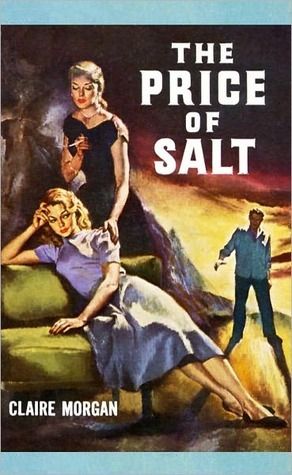
The Price of Salt by Patricia Highsmith (1952)
When the novel was first published, Highsmith was forced to publish it under a pseudonym. In the 1950s, sapphic tales were supposed to end tragically — and so her bold depiction of a hopeful ending for the love between a older socialite and a young shopgirl was dangerous and groundbreaking. It was also semi-autobiographical — Therese was inspired by Highsmith, and the dramatic story of the socialite’s divorce was inspired by the real struggle of one of Highsmith’s former lovers. The book, of course, became Carol (2015), which on its own has had a large impact. When it first premiered, the audience at Cannes Film Festival gave it a 10-minute standing ovation. It has a score of 94/100 on Metacritic and a 94% on Rotten Tomatoes. The film inspired a rich fandom community and has certainly entered the sapphic canon.
Content warnings for stalking, suicidal thoughts.
Giovanni’s Room by James Baldwin (1956)
An American expat has spent much of his life convincing himself he isn’t gay. But then he meets bartender Giovanni. David struggles with his love for Giovanni, and with his lover’s small, dirty room. He wants to separate himself from the gay community, from their seedy bars, from drag queens, from the effeminate. It’s a powerful classic about internalized homophobia, shame, repression, and self-destruction.
Baldwin once said in an interview that the book was “not so much about homosexuality, it is what happens if you are so afraid that you finally cannot love anybody.” Giovanni’s Room brought a complex, emotional treatment of same-sex and bisexual desire to the western literary world — but not without pushback. The two gay lovers of the book were white, which brought some criticism and surprise. And his American publisher even told him that he should burn the book, as the theme of homosexuality would alienate him from his Black audience.
Luckily he did publish it nonetheless, and Giovanni’s Room has remained an inspiration for countless queer authors ever since.
Content warnings for death, transphobia, sexual assault, suicidal thoughts.
City of Night by John Rechy (1963)
A gay hustler travels through New York City, New Orleans, Los Angeles, and San Francisco, painting a stream-of-consciousness picture of queer life along the way. His book inspired many queer people, film directors, and artists to come to California.
The book includes Rechy writing about the Cooper Do-nuts Riot in 1959, which is crucial. At the time, LA law made it illegal for a person’s gender representation not to match the gender shown on their ID. This was often used to target and arrest trans patrons, and many gay bars were hostile to gender-nonconforming people as a result — but Cooper Do-nuts was welcoming. When police officers entered the café in May 1959 and attempted to arrest two drag queens, two male sex workers, and novelist John Rechy, onlookers began throwing things at the officers until they fled. This turned into rioting in the streets and a slate of arrests.
The LAPD and news sources did not report or corroborate the incident at the time. In 2020, an attempt was made to recover records from the LAPD, only to discover they had been destroyed at some point, making Rechy’s description in his novel the only original account of the event considered by some to be the first gay uprising in the U.S.
Content warnings for drug use, transphobia.
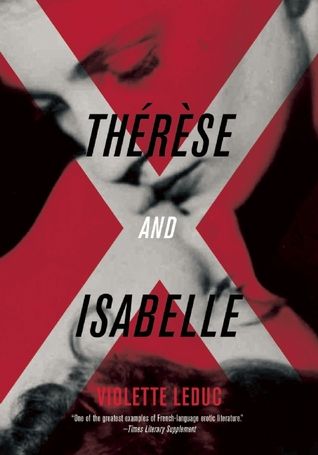
Thérèse and Isabelle by Violette Leduc, translated by Sophie Lewis (1966)
Young Leduc, a writer whose early admirers included Simone de Beauvoir and Albert Camus, was thrilled by the new revolution in writing that allowed for more explicit, courageous stories of sexuality and sex that pushed old boundaries. Yet when Leduc first came forward with her manuscript for this novella, it was heavily censored and resisted by publishers — it was simply too explicit in its descriptions of graphic sapphic sex and female desire and pleasure. The revolution was apparently not for her, and her book was considered unpublishable. It would take her autobiography, La Bâtarde, for her to get the acclaim she deserved, and she leveraged that success to get this book published in 1966. The short erotic novel is about two boarding school girls exploring each other’s bodies, and thanks to The Feminist Press at CUNY and translator Sophie Lewis, it has now become available in full, un-censored, to a U.S. audience.
Maurice by EM Forster (1971)
Maurice follows protagonist Maurice Hall, who discovers that he is gay while studying at Cambridge and goes on to struggle with his queerness throughout his life — experiencing internalized homophobia, heartbreak, blackmail, and love. Although Forster showed the novel to a few trusted friends, he didn’t publish it. Male homosexuality was illegal in England until 1967, and he was determined for his book to have a happy ending, which could make the book liable to prosecution as well as general homophobic sentiment from the public. Forster was open about his homosexuality to close friends but not out to the public, another reason not to publish, although modern readers can see queer subtext in his other novels, including A Passage to India. Maurice was published only after Forster died in 1970. A note on the manuscript read, “Punishable, but worth it?”
Content warnings for suicidal thoughts, misogyny.
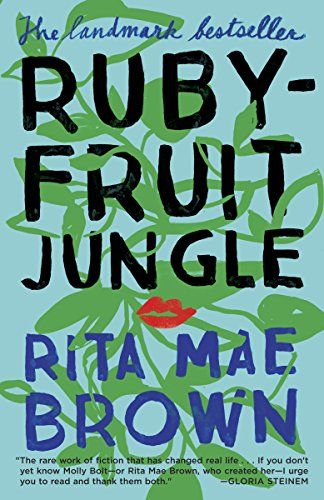
Rubyfruit Jungle by Rita Mae Brown (1973)
Rita Mae Brown’s novel is one of the lesbian coming-of-age stories, a book that was seminal for many queer women coming into their own. It was most notable for showing young Molly Bolt, an adopted daughter in a poor family, understanding from an early age that she has a crush on a girl and that is completely normal. It is an honest, racy, and radical book featuring a queer girl who rejects gender roles and binaries in and outside of the queer community, refusing the roles that people want to impose on her.
First published in 1973 by feminist press Daughters, Inc., it became an underground bestseller, selling 70,000 copies despite being almost completely ignored by reviewers. Reissued by Bantam in 1977, it went on to sell over one million copies. The novel was immensely successful, to the point that a cult of personality sprung up around Brown, who had long been active in women’s and queer movements — women even started camping on her doorstep.
Content warnings for incest, racial slurs, age gap, anti-Semitism, sexual assault.
The Faggots & Their Friends Between Revolutions by Larry Mitchell (1977)
Mitchell cofounded and lived in Lavender Hill, a queer commune in Ithaca, New York, for many years. This is what inspired him to write the fairy tale of sorts that is this book, a series of vignettes that paint the story of a group of gay men, feminists, drag queens, lesbians, queer men, and more who live, produce art, have sex, and wait for a revolution as they’re ruled by a declining patriarchal empire. While it went out of print shortly after Mitchell self-published it, the book developed a quick cult following, and was passed down in photocopies and PDFs until it was republished in the 2010s, most recently by Nightboat Books to mark the 50th anniversary of the Stonewall Riots.
Content warnings for rape, drug use, violence.
Faggots by Larry Kramer (1978)
Main character Fred Lemish is determined to find himself a good, long-term relationship by the time he turns 40, and now that he’s lost some weight, he thinks now is the perfect time. But the 1970s gay subculture isn’t exactly the place to find true love — instead he rolls through a series of bathhouses, casual hookups, discos, an orgy, emotionally cool encounters, and a tub’s worth of different party drugs. It’s a controversial book even within the gay community — upon its release, it was actually banned in what was Manhattan’s only gay bookstore. Ultimately, Kramer’s criticism of gay promiscuity and cruising culture struck a nerve and was seen as harsh, but his portrayal of a community taking too many risks has grown more accepted since the revelations of the AIDS crisis.
Content warnings for fatphobia, drug use, sexual assault.

Tales of the City by Armistead Maupin (1978)
Armistead Maupin wrote his first newspaper column of what would become Tales of the City (now a nine-novel series) in 1974 in the San Francisco Chronicle. The serial begins as Mary Ann Singleton visits San Francisco from Ohio and decides to stay, finding an apartment at 28 Barbary Lane. The eclectic people in her building quickly become a key part of her life and adventures — including the bisexual Mona Ramsey and the gay Michael Tolliver. This series is a San Francisco saga, a comic and rich series that as a serial, pushed the boundaries of storytelling. One of Maupin’s characters comes out as transgender; in 1983, a character dies of AIDS. Controversially, Maupin outed Rock Hudson, which was awful but led to visibility for the AIDS crisis when Hudson died in 1985. The point is this: Maupin’s book series was at the very center of queer life, and he wrote it from his own queer perspective, in a way that makes it crucial LGBTQ+ reading.
Content warnings for suicide, drug use, pedophilia, child abuse, addiction, racism.
The Color Purple by Alice Walker (1982)
The impact of this 1983 Pulitzer Prize winning novel and its eventual film and musical adaptation cannot be understated. The novel focuses on Celie, a young, poor Black teen living in the southern U.S. in the early 1900s who suffers sexual and physical abuse first from her father and then from the man he marries her to. As Celie grows up, she grows steadily closer to jazz and blues singer Shug Avery, until they fall into a relationship of love and sex. It’s a powerful novel about a queer Black woman escaping violence and finding contentment and independence. Walker’s book has been intensely challenged for its violent and queer content, and is considered one of the most influential queer texts of all time.
Note: Alice Walker has come under fire for promoting anti-Semitic conspiracy theories. She has long been critical of Israel and pro-Palestine, which is one thing — but increasingly in recent years, she has amplified anti-Semitic texts and released anti-Semitic statements and poetry.
Content warnings for rape, incest, child abuse, sexual violence, racial slurs, domestic abuse.
Annie on My Mind by Nancy Garden (1982)
This groundbreaking sapphic novel has been banned many times over for its depiction of two teen girls who swear to stay true to each other and to their love despite a multitude of challenges from their families and communities. Since its publication in 1982, it has never been out of print, and it was named one of the most influential books of the 20th century by the School Library Journal. In 2003, the ALA gave it the Margaret A. Edwards Award for lifetime contributions to literature for young people. It was vital because it was positive. After years of YA fiction where only tragic endings were acceptable, Garden’s book was a rallying cry for young teenage girls who saw themselves getting a happy ending.
The novel was the subject of much controversy, particularly when it was removed from the library of Olathe South High School in Kansas — protestors would even go on to burn copies of the book on the steps of the Kansas City School District office. But the ACLU’s lawsuit against the Olathe school district in 1994 would go on to federal court, where the judge ruled that its removal was unconstitutional and violated students’ First Amendment Rights. It’s a crucial ruling that shows just how rebellious Garden’s book really was.
Content warnings for outing, religious bigotry.
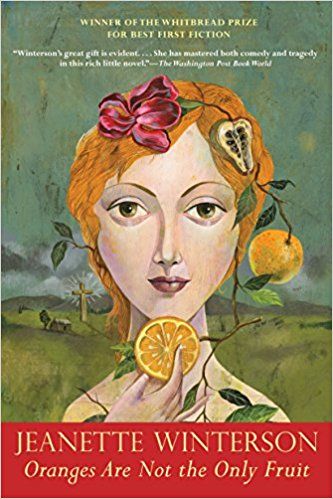
Oranges Are Not the Only Fruit by Jeanette Winterson (1985)
This semi-autobiographical novel is about a young girl named Jeanette, a teen girl coming of age in an evangelical household in England, with a controlling mother. She wants to grow up and be a missionary. But when she discovers her feelings for a girl at the market, and her family uncovers her secret, her mother becomes determined to “cure” her. She must struggle with her family’s rejection of who she is, and try to figure out how to reconcile her faith and love of the church with her truth. While the book deals with tough and painful themes, it is also funny and quirky, and considered a modern queer classic.
Content warnings for religious bigotry, child abuse.
The Gilda Stories by Jewelle Gomez (1991)
In 1850s Louisiana, a runaway woman has escaped slavery and is working in a brothel. As she settles into life with the other women of the brothel, they initiate her into vampirism and the secret of eternal life, and she takes on the name Gilda. Over the rest of the novel, Gilda jumps across time — from 1890 California to 1955 Massachusetts to the 2050 “Land of Enchantment.” Jewelle Gomez is recognized as a pioneer in speculative fiction and one of the founders of Afrofuturism. The book was voted one of Book Riot’s Most Influential Horror Novels of All Time, and its portrayal of a Black bisexual heroine transformed the realm of vampire fiction forever. Gomez herself is an activist — she was on the founding board of GLAAD, is a leader of lesbian feminist thought and activism, and was even one of the litigants against the state of California suing for the right to legal marriage with her partner, Dr. Diane Sabin, who won in May 2008 and was married only for Prohibition 8 to pass the following November.
Content warnings for rape, body horror, suicide, racism, racial slurs, drug use.
Bastard Out of Carolina by Dorothy Allison (1992)
At one point, a member of Autostraddle’s 2011 “Read a F*cking Book Club” wrote: “I firmly believe that every lesbian in the world should read Bastard Out of Carolina.” Sold! But it’s worth noting that this novel isn’t for the faint of heart. Ruth Anne “Bone” Boatright is born with “illegitimate” stamped on her birth certificate, something that bothers her mother, Anney, to no end. A few years later, she marries Glen Waddell, a man with anger issues who sexually and physically abuses Bone — and yet Anney can’t seem to leave him. It’s a book of sexuality, trauma, otherness, and most of all, painful, messy family, that deals frankly and unapologetically with issues of child abuse, poverty, toxic masculinity, and the American South.
Content warnings for graphic child abuse (sexual, physical), sexual assault, alcoholism, racial slurs, animal death.
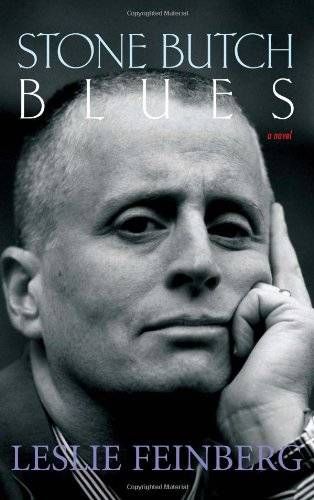
Stone Butch Blues by Leslie Feinberg (1993)
Jess Goldberg is a butch working-class lesbian in 1970s America, struggling to survive in a painful and unaccepting world. She experiences sexual assault, harassment, gender dysphoria, transphobia, and trauma over the course of her journey — but by the end of her story, she is hopeful for her future. Book Riot‘s Laura Stackton described the book as “the kind of queer, trans narrative we badly need: honest, freeing, and vital.” It is a critical book for issues including gender-nonconformity, sex work, labor activism, and more. It was passed hand-to-hand inside prisons and sold hundreds of thousands of copies.
Leslie Feinberg (she/zie and her/hir) would go on to advance a Marxist concept of transgender liberation, and impact popular culture, academic research, and political organizing. Before hir death (due to complications from multiple tick-borne co-infections including Lyme disease), zie insisted that the 20th anniversary edition of hir novel be free online to the public. You can access it here.
Content warnings for rape, suicide, anti-Semitism, racism, transphobia.
Notes of a Crocodile by Qiu Miaojin, translated by Bonnie Huie (1994)
In this queer, daring novel, a lesbian named Lazi struggles to find and keep sapphic relationships. She tends to fall hard and also run away, a bad combination, plus the widespread homophobia around her doesn’t make maintaining relationships easy. Nevertheless, she and her circle of queer friends chug onward in a narrative seeped in sadness. Meanwhile, vignettes tell us about a crocodile wearing human skin who the media is determined to find and expose — this strange supposed threat who just wants to keep existing.
At the time that Notes was published, there was a media frenzy around lesbians, which included a rise in surveillance and journalists trying to “catch out” lesbians, the pressure of which resulted in many deaths by suicide. Author Qiu Miaojin has become a countercultural queer icon in Taiwan after she died from suicide at 26 — the main character’s name, Lazi, is even the source of a Chinese slang term for “lesbian.” She’s considered a martyr in the fight for gay rights in Taiwan.
Content warnings for violence, abuse, suicidal thoughts and actions, self-harm.
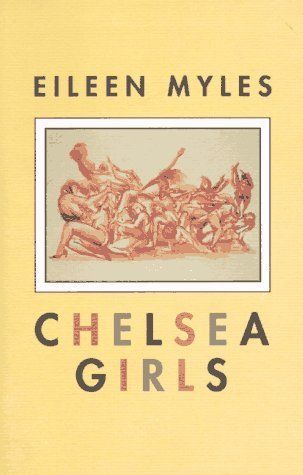
Chelsea Girls by Eileen Myles (1994)
In this collection of autobiographical stories written by poet Eileen Myles, a young female writer comes of age — from a childhood living in a Catholic household and with an alcoholic father, to a lesbian writer trying to gain a foothold in the poetry scene in 1970s New York. The stories are honest and vivid, full of stories about lesbians, their love, their sex, their drama, and their struggles. Too long out of print, the book was reissued by HarperCollins in 2015. Myles (who is gender queer and whose pronouns are they/them) is a poet, journalist, and reviewer, a notable figure in the art scenes of 1980s and ’90s New York. They even ran for president in 1991-1992, and Zoe Leonard’s “I want a president” which begins with the line “I want a dyke for president,” was written in honor of Myles’ run.
Content warnings for alcoholism, addiction, religious bigotry, sexual assault.
Funny Boy by Shyam Selvadurai (1994)
As war rages between the army and the Tamil Tigers in northern Sri Lanka, Young Arjie is struggling with society’s racism and with his own strangeness — in his large family, he is a “funny boy,” preferring to dress up as and imagine himself as a girl than play cricket with his brother. Written in six inter-connected parts, this story shows how entangled Arjie’s personal life becomes with the politics and events of the world around them. As prejudiced, ethnic violence increases in a tumultuous Sri Lanka, Arjie grows into his homosexuality and comes of age.
Content warnings for child abuse, genocide, emotional abuse, fatphobia, sexual assault, violence.
Tipping the Velvet by Sarah Waters (1998)
It’s 1890, and Nan is smitten with male impersonator Kitty. She follows Kitty to London, and before long the two are in love and performing as men at London’s music halls. We follow Nan through her love affairs and gradual coming of age. Waters had read a lot of lesbian fiction where the women had to escape their society to survive, and she wanted Nan to live right in it, placing queerness and gender experimentation within Victorian London. The book was adapted into a BBC television drama serial in 2002 that heightened the novel’s success and reach.
Content warnings for emotional and physical abuse, racism, suicidal thoughts.
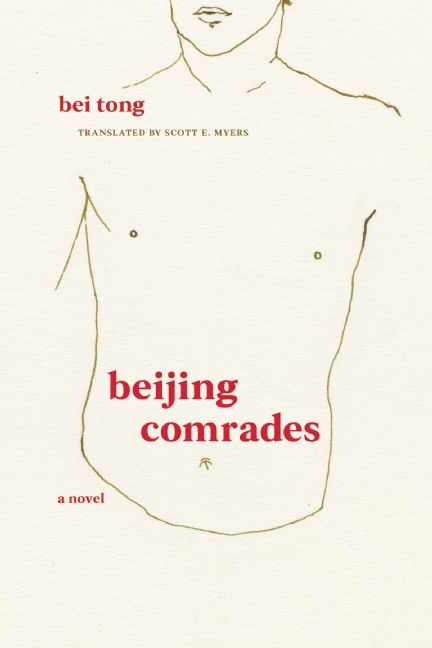
Beijing Comrades by Bei Tong, translated by Scott E. Myers (1998)
An arrogant playboy businessman falls in love with working-class student Lan Yu, and must deal with what it means for him to be interested in another man. Not only does this book show an explicit, erotic same-sex relationship in late 1980s China between two men, but the book also describes the Tian’anmen Square protests and government repression, a rarity due to Chinese suppression and fear of persecution. The author, who writes under pseudonym Bei Tong, first published erotic love story Beijing Comrades online. Scott E. Myers in his translation also functions as editor, taking years worth of various published versions — some of which were censored — and combining them into one edition.
Content warnings for violence, internalized homophobia, sudden death.
Valencia by Michelle Tea (1999)
When I visited San Francisco, this is one of the main queer books that I was recommended to pick up at a local bookstore, an autobiographical novel of queer women in the Mission District, looking back on the author’s traumatic background while diving into the episodes of her life, into queer and kink communities and queer subcultures and spaces many of which no longer exist in contemporary San Francisco. The book is a seedy story about punk and dyke culture and being in love with girls, a surprisingly funny and moving story told in Tea’s straightforward descriptions of Marta, of Willa, of Iris, of Magdalena, of heartbreaks and romance, of drama and hot sex.
Content warnings for drug use, childhood trauma, child abuse, alcoholism.
Rainbow Boys by Alex Sánchez (2001)
It’s a classic. Jason, Kyle, and Nelson are three high school teens struggling with their queer identities — Jason is the classic jock, a basketball team star who has a lot to lose if he admits he’s bisexual; Kyle is gay but hopes no one, especially his parents, ever finds out; and Nelson is the first in his grade to be fully out of the closet, thanks in part to a supportive mom. Sánchez was a pioneer who helped support future gay young adult fiction. It’s a fast-read and a great book about queerness and homophobic bullying. Some reviewers (a bit optimistically) say that much of the bullying or homophobia they experience isn’t relevant today, but the truth is, many young queer people are still struggling to navigate an intolerant world packed with toxic masculinity.
Content warnings for child abuse, domestic abuse, biphobia, alcoholism.
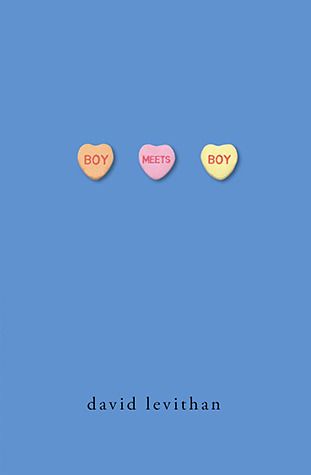
Boy Meets Boy by David Levithan (2003)
I remember when this book was everywhere. It’s big selling point was this: the town is a fantasy where homophobia simply doesn’t exist. Protagonist Paul came out when he was five. He’s just a normal teen, with the full support of family and with great friends. For many queer readers, it was radical to read a YA book where the main character was allowed to just be normal, and where his gayness was just a regular part of his story. It has a couple now-outdated pieces, and some readers might not realize today how big a deal it was to have a teen protagonist who was just queer and allowed to exist.
Content warnings for deadnaming, transphobia, religious bigotry.
The Line of Beauty by Alan Hollinghurst (2004)
This book tells the story, split into three parts, of Nick Guest, a gay middle-glass man in 1980s England who recently graduated from Oxford. He moves into the home of the Fedden family while they’re away in France, and after helping their daughter Cat through an episode of self-harm, he quickly becomes a permanent part of their family. But his presence and inclusion is rooted in silence: they accept him on the unspoken condition that he keep his queerness secret. The book touches on privilege, HIV/AIDS, beauty, the hypocrisy of politics and the heterosexual family, and the struggle of homophobia both internalized and oppressive. The novel won the 2004 Booker Prize and was ranked 38th on The Guardian‘s list of the 100 best books of the 21st century.
Content warnings for drug use, self-harm, death.
Call Me by Your Name by André Aciman (2007)
A bisexual 17-year-old named Elio and a visiting 24-year-old American Jewish scholar named Oliver have a complicated, secret summer romance in 1980s Italy. The novel then follows the two men over the next 20 years, meeting on and off, reminiscing on their summer fling, and leading separate lives. The novel had rave reviews as a picture of obsessive love, and it won a Lambda Literary Award for Gay Fiction. Many contemporary readers are torn on their feelings about the novel due to the age gap between Elio and Oliver, but the book’s cultural impact is undeniable after the film featuring Timothée Chalamet and Armie Hammer released in 2017, and was nominated for several Academy Awards.
Content warnings for adult/minor relationship, sexual assault.
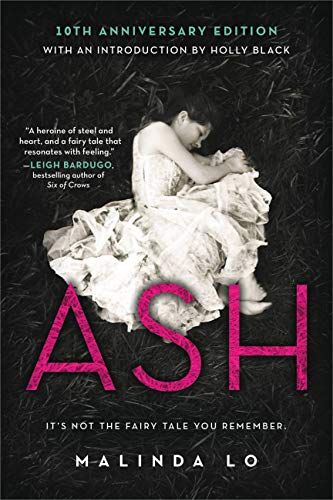
Ash by Malinda Lo (2009)
Aisling, or Ash, is a teenage girl working as a servant in her own home to help pay off her father’s debt. Each night, she wishes to become a character in one of her fairy tales — and her wishes seem to come true when she meets fairy prince Sidhean, who binds her to join him in the faerie kingdom. But when Ash starts to fall for the strong huntress and noblewoman Kaisa, she has to figure out her way out of a messy tangle of magic, love, and broken deals. This groundbreaking sapphic Cinderella retelling is considered a modern queer classic that helped to launch a new age of queer fantasy retellings.
Content warnings for child abuse, animal death, confinement.
The Song of Achilles by Madeline Miller (2011)
Madeline Miller single-handedly led an entire generation of queer readers back to the classics and mythology. It retells the story of Achilles from the perspective of Patroclus, an exiled ex-prince — and at the heart of it all is their romance. The Song of Achilles was a New York Times Best Seller and one of the first novels to focus on a queer relationship in a historical setting. It brought us new books reimagining the myths, broke through a lot of the gate-keeping that was rampant in the classics community, and is the favorite book of so, so many of my queer friends. It presented a soft love story between two men, including one of the most traditionally masculine men and warriors of all time.
Content warnings for rape, violence.
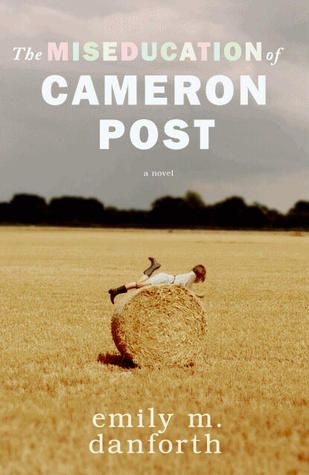
The Miseducation of Cameron Post by emily m. danforth (2012)
This modern classic teen novel is about Cameron Post, a 12-year-old girl who is sent to live with her conservative aunt and grandmother after her parents die in a car crash. Cameron is gay, and has long enjoyed trysts with other girls, but she knows that in Miles City, Montana, she’ll have to be especially careful to hide herself. But after she increasingly starts to enjoy kissing good friend Coley, their romantic relationship is discovered, and her family sends her to a conversion camp. This riveting and devastating book about people attempting to suppress queer teens was adapted into an award-winning film starring Chloë Grace Moretz. It was named the #1 Most Influential LGBT Book in Literature in a survey for Buzzfeed. As a fun fact, this book was actually danforth’s dissertation. It’s an important story of queer survival, representing the mental impact and cruelty of conversion camps for queer youth.
Content warnings for drug use, self-harm, religious bigotry, conversion therapy, forced institutionalization, outing, suicide attempt.
Aristotle and Dante Discover the Secrets of the Universe by Benjamin Alire Sáenz (2012)
When Aristotle “Ari” Mendoza and Dante Quintana first meet at the swimming pool, the two Mexican American teens appear to have nothing in common. But as the two loners begin to spend time together, they begin to open up, finding what they need in each other. The book takes on Mexican American identity, gender and sexuality, family relationships, and in particular, toxic masculinity and its ties to homophobia and transphobia.
The novel has won a long list of awards, including a Stonewall Book Award, and was a huge hit for queer teen readers. Sáenz himself came to terms with his sexuality through writing this book, coming out at 54. It’s a book that has inspired many young queer teens, particularly teens of color, to stop being afraid of who they are.
Content warnings for violence, transphobia, intergenerational trauma, mental illness.
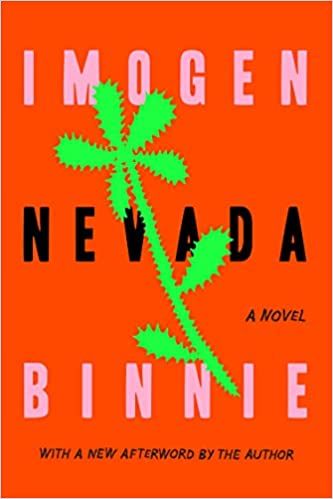
Nevada by Imogen Binnie (2013)
Things are going okay — not great, but okay — for Maria Griffiths. At least until she finds out her girlfriend cheated on her — at which point she spirals. Taking some heroin and Steph’s car, Maria heads out on a road trip out of New York City and across the country. It’s in Nevada that she stumbles on James, who she quickly decides is probably trans, and who reminds her of her own younger self. When writing this book, Binnie was set on having it be a book about trans women for trans women, and explicitly not falling into the trap of describing the trans experience for cis readers. This sometimes-bleak, blistering book is an honest and bold cult classic that features a complex, messy punk trans woman navigating her world.
Content warnings for transphobia, drug use, addiction, deadnaming, suicidal thoughts.
Melissa by Alex Gino (2015)
This children’s novel portrays trans 4th grader Melissa, who is seen by everyone as a boy, but who reveals who she really is by switching roles with a friend to play Charlotte in her class play. It won the Children’s Stonewall award, the Lambda literary award, and more — but also topped ALA’s 10 Most Challenged Books list in 2018, 2019, and 2020, and was the fifth-most banned book between 2010 and 2020, often labeled inappropriate for being a book for children that deals honestly with sexuality and trans identity.
The book was originally titled after the protagonist’s dead name, but in 2021, Gino began changing the title to Melissa’s Story when signing books for fans, apologizing to the character and trans community for not speaking up to Scholastic when it was first published. This led to Scholastic officially changing the title to Melissa as of April 2022. The author encourages owners of old copies to use printable/request-able stickers or a good old Sharpie to fix the title.
Content warnings for deadnaming, transphobia.
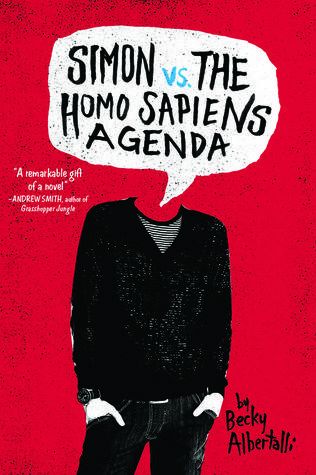
Simon vs. the Homo Sapiens Agenda by Becky Albertalli (2015)
I have few book-loving friends who haven’t read the heart-filled romcom by Albertalli. Simon is gay, but not out, and not quite ready to be out. But he meets another boy from his class anonymously on Tumblr, and he and the boy — who he only knows as “Blue” — begin to fall in love over email. But Simon’s life threatens to fall to pieces when class clown Martin threatens to tell everyone that Simon is gay. This ultimately sweet, heart-warming story is full of realistic, genuine teenage struggle, awkwardness, drama, and humor. The book was adapted into an excellent film, Love, Simon, that came out in 2018 and starred Nick Robinson, Keiynan Lonsdale, Katherine Langford, and Alexandra Shipp. It was notable as the first film by a major Hollywood studio to focus on a gay teen romance.
Content warnings for forced outing.
Lumberjanes, Vol. 1: Beware the Kitten Holy by Noelle Stevenson, Grace Ellis, Shannon Watters, illustrated by Brooklyn Allen, colorist Maarta Laiho, Aubrey Aiese (2015)
This Eisner Award-winning comic book series follows a group of girls — Mal, Ripley, Molly, April, and Jo — as they spend their summer at Miss Quinzella Thiskwin Penniquiqul Thistle Crumpet’s Camp for Hardcore Lady Types. The five scouts of the Roanoke cabin find themselves dealing with supernatural occurrences and creatures to solve mysteries and earn Lumberjane scout badges. The female-led, female-authored, girl-centric comic series was originally planned as an eight-parter, but ended up running for 75 issues and a one-shot finale thanks to its strong sales. The book includes a Navajo trans girl with two gay fathers, and a sapphic relationship between Molly and Mal. The representation of queerness and female friendship for young readers is crucial, and the fanbase — labeled the Lumber Jumbies — has continued to grow.
Content warnings for animal death, violence.
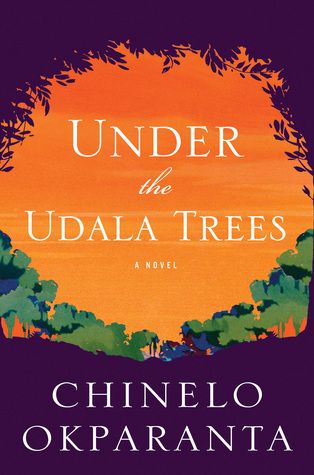
Under the Udala Trees by Chinelo Okparanta (2015)
In this book set in 1960s Nigeria, a Christian Igbo girl named Ijeoma discovers her love for a Muslim Hausa girl named Amina, only to face extreme homophobia and pressure from her family to become heterosexual and fit in properly with what is expected from her. In modern-day Nigeria, same-sex relationships are criminalized. Okparanta has received criticism from Western readers who claim that such strong homophobia is an issue of the past in the U.S. (which itself is arguable), or who take it as an opportunity to see Africa as “behind” or “backwards” compared to the U.S. Okparanta’s literary work thus far has worked to feature queerness in Nigeria and the dangers queer people in Nigeria face if they try to live their truth.
Content warnings for rape, sexual assault, violence, domestic abuse, miscarriage, religious bigotry.
La Bastarda by Trifonia Melibea Obono, translated by Lawrence Schimel (2016)
Okomo is an orphaned teen girl living under the controlling eye of her grandmother, and the oppressive weight of Fang cultural norms. Drawn into a gang of “indecent” girls, Okomo begins to discover a new world, a different world than the one her grandmother wants her to life in — a queer, nonconformist world that includes her “man-woman” uncle, Marcelo. This short read is the first novel by an Equatorial Guinean woman to be translated into English — but while it is still occasionally sold in the country, the book is officially banned in Equatorial Guinea due to its gay protagonist. It is an invaluable contribution to the queer canon from a daring, bisexual author.
Content warnings for rape and sexual assault, incest, domestic abuse, child abuse.
Every Heart a Doorway by Seanan McGuire (2016)
McGuire’s Wayward Children series has become a beacon for so many queer teens — and adults — since the very first volume. The series features children who slip through doors into a variety of magical, fantasy worlds with their own rule books and identities — only to find themselves thrown back into reality. Now, they are struggling with various forms of trauma, belonging, and rebellion — and many of them are desperate to return to their worlds, if only they could find their doors. This first novella features Nancy, an asexual girl with a white streak in her hair. But McGuire’s novella series has also featured trans, sapphic, and intersex identities among others, while featuring a series of children who in some way or another no longer fit into our reality, a feeling that many young queer kids and folks can deeply relate to. This series is ongoing and becoming increasingly important to many readers.
Content warnings for transphobia, deadnaming, death.
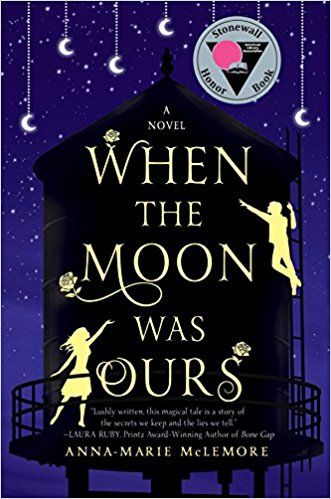
When the Moon was Ours by Anna-Marie McLemore (2016)
Miel and Sam have been friends ever since the old water tower toppled, and Miel fell out. Roses grow from her wrists — but with rumors spreading, the four Bonner sisters decide they want the roses that grow from Miel’s skin. The romance is complicated and sweet, but the truest joy of this book is its lush language and descriptions — McLemore’s linguistic brilliance flows over the page, their magical realist magic imbuing every sentence. A trans boy and a trans woman are at the heart of this story, and it explores gender and gender fluidity with brilliance. McLemore is a queer Latine author who is nonbinary and bigender; their husband is transgender. When the Moon Was Ours won the James Tiptee Jr. Award and the Stonewall Honor Award, and was longlisted for the National Book Award in Young People’s Literature.
Content warnings for transphobia, deadnaming, violence, child abuse, suicide attempt.
Less by Andrew Sean Greer (2017)
Arthur Less is a 49-year-old gay writer struggling to find any kind of real success. Invited to the wedding of his ex-lover, Less sets out on an extensive trip around the world, accepting the kind of literary events and invites he’d usually say no to, all in order to avoid the wedding at all costs. The book is a satirical, funny book about heartbreak that clearly made an impression on readers — becoming a New York Times Best Seller and winning the 2018 Pulitzer Prize for Fiction. It’s an honest story about an aging gay man dreading his 50th birthday and going through heartbreak.
Content warnings for drug use, body shaming, death.
Lie With Me by Philippe Besson, translated by Molly Ringwald (2017)
Walking in Bordeaux, Philippe stumbles on a young man who sends him back tumbling through his memories, all the way to his first love. As teens, Thomas and Philippe have a secretive, hidden sexual relationship. But even as they fall for each other, Thomas continues to be withdrawn, knowing with certainty that eventually, Philippe with his privilege will leave him and their French town behind. This sad book is full of longing, and the sad truths of the way that the realities of heteronormativity and class difference can come between two young people in love.
Content warnings for suicide.
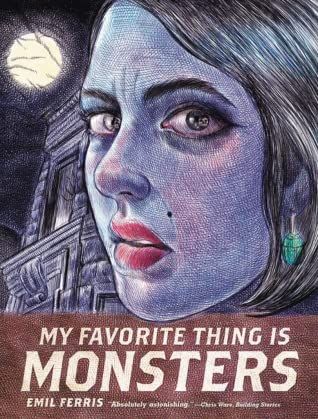
My Favorite Thing is Monsters by Emil Ferris (2017)
10-year-old artist Karen Reyes journals in smudging ballpoint on raggedy, crinkled pages, inking herself in as a young work-girl — a monster — copying old-school pulp horror comics, trying to solve the murder of her enigmatic upstairs neighbor Anka, and struggling to make friends in 1960s Chicago. As family struggles unspool around her, and as she timidly enjoys the company of ghostly Sandy and Black drag queen Franklin, she continues to find herself missing her best friend and childhood love, Missy. Ferris’s award-winning, queer graphic novel is brilliant and vividly gorgeous, and Volume 2 continues to be too far away. Most poignant is the way Karen finds herself and her queer strangeness in horror comics and in monsters. She hopes to someday be a werewolf so that she can bite and save her ill mother.
Content warnings for pedophilia, racism, sexual assault, child abuse.
Ramona Blue by Julie Murphy (2017)
Murphy’s book caused a stir when its description was first released. This YA novel features Ramona, a responsible young woman hurt when summer love Grace leaves town, who begins to discover feelings for childhood friend Freddie. This leaves her confused — she’s rooted friendships and her own identity around being a lesbian for so long, but what if the label doesn’t apply?
Ramona is enchanting and funny, but most of all it is crucial for its embracing of questioning representation. The original synopsis of the book was misleading, and made it sound like the book would portray the trope of “the right guy turning a lesbian straight.” The publishers did eventually edit the description. While that was an issue, a hefty bucket of biphobia has remained part of the controversy. Many argued that the book featured lesbian erasure, while others countered that bisexual, pansexual, and questioning identities are all acceptable ways to be queer. Ramona isn’t quite sure what label applies to her, and that’s okay. Sexuality is a fluid thing. This YA novel is valuable for featuring a queer person who is still trying to find the right label for herself, and who struggles through a crisis of identity in doing so.
Content warnings for alcoholism, biphobia, anxiety and panic attacks, racism.
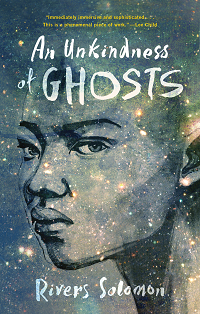
An Unkindness of Ghosts by Rivers Solomon (2017)
In this stunning space fantasy, Solomon writes a social allegory heavy with romance, violence, queerness, racism — as well as laughter, joy, found family, and heart. Odd Aster is a scientist living in the lower decks of a spaceship regimented and ruled by oppression, generations after humanity has left earth. Surgeon Theo encourages her scientific progress, and she fosters her friendship carefully with paranoid Giselle. Aster yearns to rebel, tear down it all. And with her mother’s coded journals, she might just get the chance. This book is suspenseful, devastating, and beautiful, asking fascinating questions, and it introduced us to the magnificent Rivers Solomon, a nonbinary and intersex author whose pronouns are fae/faer and they/them.
Content warnings for racism, violence, sexual assault and rape, police brutality, child death, torture, suicide, ableism.
Like a Love Story by Abdi Nazemian (2019)
Reza has just moved to 1989 New York City with his family. He knows he’s gay — but all he knows of queerness is that gay men are dying of AIDS. He starts dating Judy, a teen girl obsessed with her gay uncle Stephen, an activist with ACT UP. But things start to change when Reza meets Judy’s best friend: the school’s only out teen, fighting to document and photograph the AIDS crisis. It’s a beautiful story of love and friendship, and an excellent work of historical fiction besides, filling in a much-needed gap in YA literature. Nazemian strikes the perfect balance between bringing in real history and telling an emotional, personal story.
Content warnings for racism, body shaming, fatphobia, violence, terminal illness.
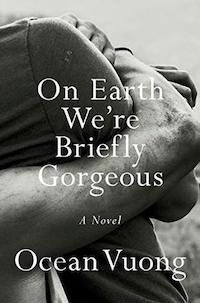
On Earth We’re Briefly Gorgeous by Ocean Vuong (2019)
Little Dog is a young Vietnamese American man writing to his mother about their difficult relationship, his young queer identity, their father’s history, the teenage boy he fell for, and the impact of opioids on the city he grew up in. This autobiographical, epistolary novel is about finding joy and finding survival. Vuong’s novel is about balance — he can’t forgive or condemn his mother for their tumultuous relationship, he can only dig into it further. Vuong’s abilities with language are so, so powerful, and he worked in this book to overturn Western conceptions of the novel. Poet Vuong’s stunning book is central to modern-day America and its battle with addiction and trauma.
Content warnings for drug abuse, addiction/alcoholism, domestic abuse, death.
A Country for Dying by Abdellah Taïa, translated by Emma Ramadan (2020)
In 2007, Moroccan and Muslim author Abdellah Taïa came out as gay in French-Arab journal Tel Quel. His family was furious, and he was widely condemned and threatened throughout the country of Morocco, where homosexuality is illegal. His coming-out was a powerful moment in Morocco and in the Arab literary world. In A Country for Dying, Taïa writes of a Moroccan prostitute, Zahira, and the people who take refuge by her side — from Aziz, who is transitioning into life as a woman and wants Zahira to choose her new name, to a gay Iranian revolutionary and refugee, to Allal, Zahira’s first love. The novel is just one of Taïa’s works, which also include autobiographical novels Salvation Army and An Arab Melancholia, both translated by Frank Stock.
Content warnings for deadnaming, violence, sex work.

The Henna Wars by Adiba Jaigirdar (2020)
Nishat comes out to her parents, and it doesn’t go well. Her parents love her, but Muslim girls simply aren’t lesbians. Nishat doesn’t know what to do — and when a childhood friend comes back into her life, she falls for her instantly. A school competition leaves them both starting henna businesses, even though Flávia is appropriating Nishat’s culture, and then Flávia’s cousin starts spreading rumors about Nishat and her family — and so their relationship and lives get steadily more and more tangled. This YA book is a brilliant romcom for young readers but also a rich look at what it means to be Muslim and queer, and exposing teens to needed conversations about cultural appropriation.
Content warnings for outing, racism, bullying, Islamophobia, cultural appropriation.
Detransition, Baby by Torrey Peters (2021)
Reese is a trans woman in a loving relationship with girlfriend Amy — at least, until Amy detransitions and becomes Ames. Now, Reese is miserable, sleeping with married men — and Ames’s decision has cost him his found family. But when Ames’s boss and lover, Katrina, announces that she’s pregnant, and he knows that Amy wants a child, he begins to wonder: Is there a way that the three of them could raise this baby together? The novel is rich and complex, tackling the struggles of the trans community and being honest and nuanced about queerness in relationships, desire, sex, and parenting.
Content warnings for transphobia, outing, domestic violence, and discussion of suicide and miscarriage.
Nonfiction: Memoir, History, and More
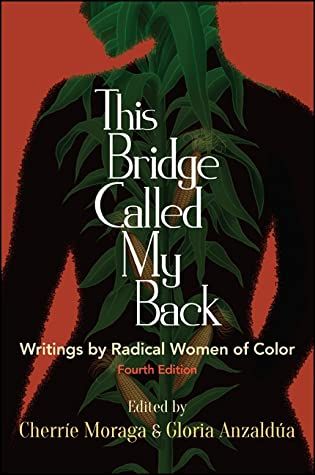
This Bridge Called My Back: Writings by Radical Women of Color edited by Cherríe L. Moraga and Gloria Anzaldúa (1981)
This iconic anthology was unique at the time for bringing together and centering the voices of women of color from diverse backgrounds. The book laid a foundation for third-wave feminism, and had a huge impact on activism and on academia, by providing an intersectional framework for bringing race, ethnicity, and class into queer studies. The dialogue and rallying call of this collection became a touchstone for generations of feminist women of color. Partially a response to the racism of white feminists in the second-wave movement who were silencing and erasing women of color, this book is now on its fourth edition.
Content warnings for biphobia, xenophobia, racism, misogyny.
Zami: A New Spelling of My Name by Audre Lorde (1982)
In this book, which Lorde describes as a “biomythography,” she tells us that Zami is “a Carriacou name for women who work together as friends and lovers.” Lorde is one of our most crucial Black lesbian icons, and is known for her incredible contributions to feminist theory, critical race studies, and queer theory. In that context, this semi-memoir, semi-novel is powerful in its gender-blurring, its queerness, its descriptions of otherness. “Being gay girls together was not enough. We were different,” Lorde writes. “Being Black together was not enough. We were different.” It’s a story of growing up a Black lesbian woman and finding her way to herself and to a community of women like her.
Content warnings for abortion, racism, suicide, sexual assault and rape, alcoholism, child abuse.
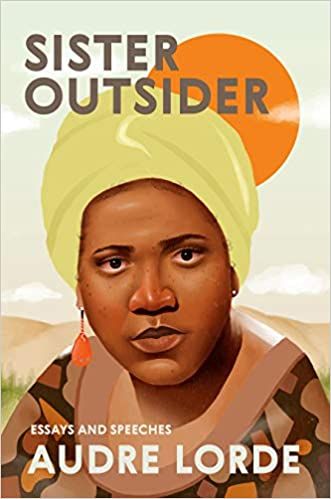
Sister Outsider: Essays and Speeches by Audre Lorde (1984)
Two books by Audre Lorde, you ask? Yes, two books by Audre Lorde. Why? Because she’s Audre Lorde, and her work really is that influential. This collection of 15 feminist essays and speeches written between 1976 and 1984 is moving, poetic, and clear. Lorde unpacks intersectionality and the impossibility of breaking up the aspects of an identity as if they don’t influence each other or make one whole. She writes about white feminism, lesbian parenthood, toxic masculinity, colorism, imperialism, and how Black women can best support one another in the struggle. Most of all, she emphasizes a solidarity that recognizes rather than ignores the intersections of class, race, gender, and sexuality that make us different.
Content warnings for racism, misogyny, sexual assault and rape, racial slurs.
Ain’t I a Woman: Black Women and Feminism by bell hooks (1981)
This was the first major work of bell hooks, and arguably one of the most influential books to feminist thought and political theory. In this book, hooks looks at the historical impact of sexism and racism, media portrayal, and more on Black women and their marginalization. She digs into the devaluation of Black womanhood within the white supremacist capitalist patriarchal structure, and how white feminism has historically excluded Black women from the conversation. It was important for hooks that feminist work be accessible and readable for the average reader who might not be able to pick apart an academic-like text, so her work is extremely clearly written. hooks described herself as “queer-pas-gay,” or “queer-not-gay,” and her work is crucial to any intersectional queer history.
Content warnings for misogyny, racism, classism.
And the Band Played On: Politics, People, and the AIDS Epidemic by Randy Shilts (1987)
The AIDS crisis was unstoppable. But why? This book by Shilts proved unmistakably that the spread of HIV and AIDS was so devastating due to the incompetence, apathy, and prejudice of the U.S. government and medical system. From the first confirmed case of AIDS in Africa to actor Rock Hudson’s announcement that he was dying of AIDS, a revelation that brought an explosion of attention to the disease, Stilts shows how the devastating impact of this disease is directly tied to the failure of the medical system, political community, and of the media coverage itself to appropriately address it and raise the alarm due to its neglect of the impacted communities.
Shilts had been covering the queer community for years when he started the book, covering the trial of Harvey Milk’s assassin and writing a biography of Milk in 1982. His early work accusing gay leaders in San Francisco of “hiding” the epidemic and not doing enough, as well as his argument that they should close the city’s bathhouses, made many people angry. Shilts’s Patient Zero argument in the book was also later debunked. But this book overall made many, many readers aware for the first time of the trauma, unfounded bias, and neglect that made the AIDS crisis as devastating as it was.
Shilts was tested for HIV while writing the book but insisted his doctor wait to tell him the results until he completed it. He didn’t want the results to affect his journalistic work. He died of complications from AIDS in 1994.
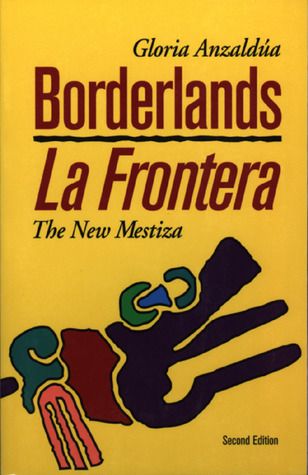
Borderlands / La Frontera: The New Mestiza by Gloria Anzaldúa (1987)
What does it mean to live on the frontier between cultures and languages, to live on the margins, on the borders? Chicana author Anzaldúa’s work about the murky and precarious existence of women who live in the liminal spaces — from Chicanos in Western culture, to women in Hispanic culture, to undocumented migrants, to lesbians and queer women in the straight, heterosexual world. This poetic, beautiful book touches on Anzaldúa’s own experience of being a Chicana woman and navigating a world that isn’t built for you. Anzaldúa herself was queer and her works are absolutely vital for an understanding of living on the edges of the world, living in on the borders of “in-between.” Her work is considered one of the primary early works or precursors to Latinx philosophy.
Content warnings for racism, racial slurs, rape and sexual violence, violence, genocide.
Borrowed Time: An AIDS Memoir by Paul Monette (1988)
“It will be recorded that the dead in the first decade of the calamity died of our indifference,” writes Monette. This memoir is a desperate, painful story about the real-life experience of living through the AIDS crisis. When his boyfriend, Roger Horwitz, got sick, Monette wrote about their experience. The crisis ignited something for Monette, who would publish six books in as many years, chronicling his queerness, his grief, and the sorrow exploding around him. Borrowed Time is all about Roger’s illness, Monette’s fears, and Roger’s eventual death, a love story and a profound work about loss. His memoir Becoming a Man: Half a Life Story would be the first LGBTQ title to win the National Book Award in 1994. Unfortunately, he died of complications with his HIV the following year.
Content warnings for terminal illness, death, medical bias.
Gender Outlaw: On Men, Women, and the Rest of Us by Kate Bornstein (1994)
Kate Bornstein’s book broke all the rules. At the time they wrote their book, nonbinary was not yet a label people knew existed. They first started identifying as gender-nonconforming in 1986, knowing that while they definitely did not identify as a man, they also weren’t quite a woman — but in their early life, they felt like the other side of the binary was their only other option. They now identify as nonbinary using she/they pronouns, but their 1994 work was a radical exploration of their struggle to crush the gender binary and push us to the furthest borders of embracing gender fluidity. There’s a reason Bornstein is such an icon in the queer, trans, and gender-nonconforming communities, and it’s because they wrote this book in a rush of refusal to accept society’s attempts to drive them into a box they knew they didn’t fit.
Content warnings for body shaming, misogyny, deadnaming, transphobia, addiction.
Exile and Pride: Disability, Queerness, and Liberation by Eli Clare (1999)
This groundbreaking book is a crucial text for the intersection of queer and disability politics and identity. Clare writes honestly of his experience as a genderqueer activist and writer with cerebral palsy, exposing ableism and highlighting the ways that our bodies, in all ways, experience oppression, power, and trauma, and calling for social justice movements that are accessible and supportive of everyone. I encourage all queer activists to read this book, and dig into Clare’s analysis of ableist oppression and disability activism, tying in class, gender, sexuality, and environmentalism. An absolutely crucial intersectional text that can continue to teach us a lot today. Clare continues to be a powerful and vital activist within queer, trans, and disabled spaces.
Content warnings for ableism, adult/minor relationship, medical trauma.
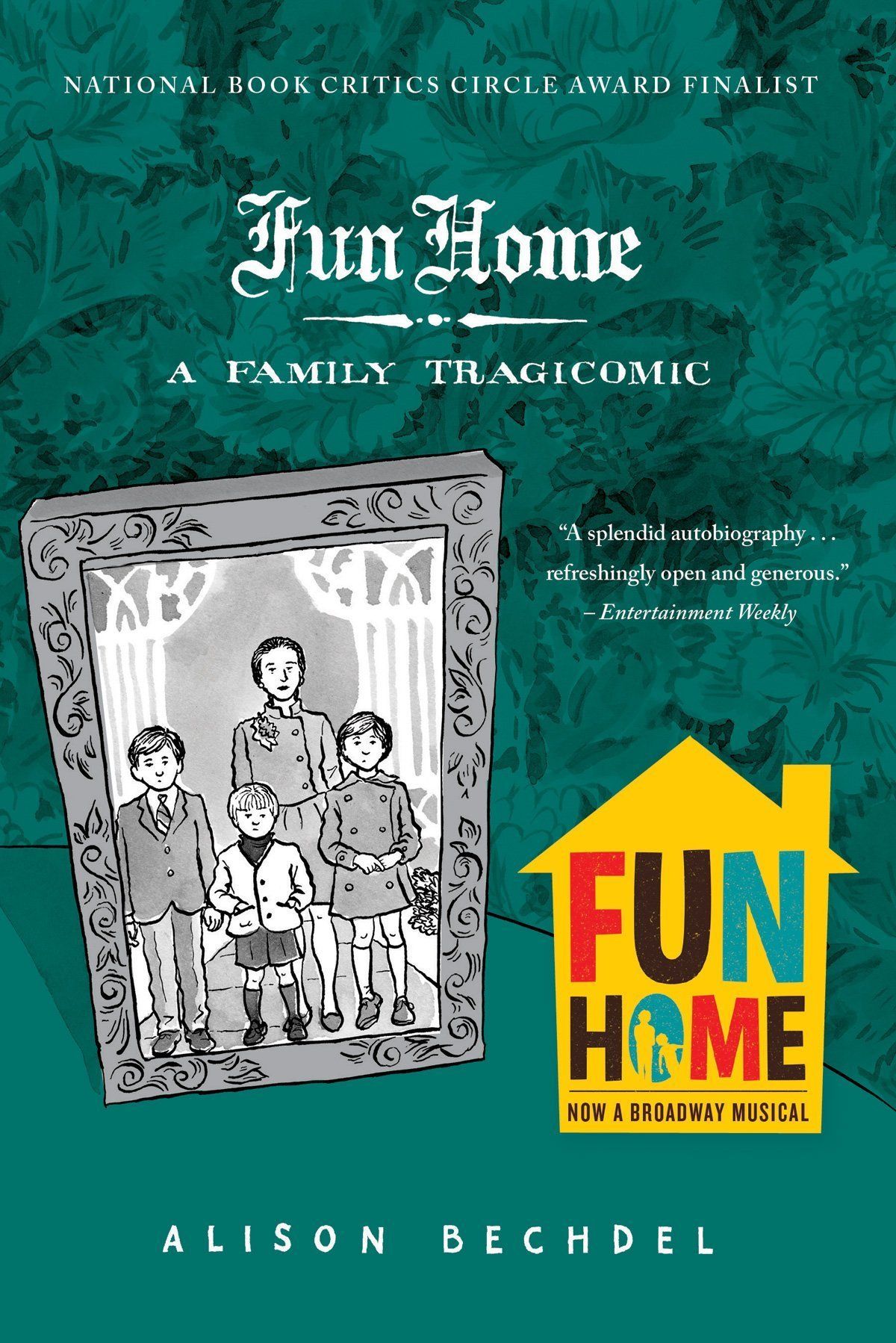
Fun Home: A Family Tragicomic by Alison Bechdel (2006)
This modern classic focuses on Bechdel’s complicated and twisting relationship with her father. It chronicles both Bechdel’s own queer coming of age and her tumultuous relationship with her closeted father through dark humor and a rich, laborious art style.
Fun Home has been much-challenged. More than one group has claimed that is “pornographic,” and several school boards and parent groups have tried to have it removed from curriculums and school libraries. Nevertheless, it continues to establish itself as one of the new classics of gay literature. In 2007, it won the GLAAD Media Award for Outstanding Comic Book, the Stonewall Book Award for nonfiction, the Publishing Triangle-Judy Grahn Nonfiction Award, and others, and many publications named it the best book of the year or of the decade. The Guardian would later include it in its list of the 100 best books of the 21st century. It was also developed into a musical that was a finalist for the 2014 Pulitzer Prize of Drama and won the Tony Award for Best Musical in 2015.
Content warnings for suicide, death, adult/minor relationship.
Crip Theory: Cultural Signs of Queerness and Disability by Robert McRuer (2006)
McRuer works in this book to break down compulsory able-bodiedness as an intricate piece in the puzzle of capitalism and compulsory heterosexuality, unpacking its impact on popular protest movements and on cultural touch points such as Queer Eye for the Straight Guy. The book draws on so much to really unpack how crip theory can impact so much about how we analyze our world, examining how marginal bodies and sexual identities unsettle the dominant ones and give us the potential for a new way at looking at disability and queerness. McRuer also co-edited the anthology Sex and Disability and wrote The Queer Renaissance: Contemporary American Literature and the Reinvention of Lesbian and Gay Identities. He’s considered one of the founding scholars in the field of queer disability studies.
Content warnings for ableism.
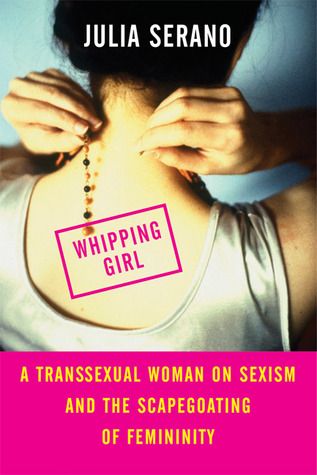
Whipping Girl: A Transsexual Woman on Sexism and the Scapegoating of Femininity by Julia Serano (2007)
Whipping Girl is a transfeminist manifesto that is absolutely crucial to intersectional feminism, and argues powerfully that transphobia is rooted in sexism, that transmisogyny helps to enforce misogyny and the patriarchy at large, and that transgender activism is vital for feminist movements moving forward. Femininity, she presses, is punished and demeaned, whether it presents itself in people who are female, male, or gender-nonconforming. Julia Serano is a bisexual trans woman, slam poet, writer, and biologist whose work has appeared in queer, feminist, and pop culture magazines for years, and her writings are used to teach gender studies material across the U.S. In our modern day era when transphobia is rising and reproductive rights are under threat, Serano’s book is a vital reminder of the ways that transmisogyny only serves to reinforce sexism.
Content warnings for misogyny, transphobia, biphobia, deadnaming, sexual assault, violence.
Transgender History by Susan Stryker (2008)
As I said in my introduction, visibility is key for queer people to thrive, and one of the most erased and silenced aspects of queer identity is that we have always existed and are not a modern phenomenon. In this book, Stryker covers trans history from the 1850s to today, unpacking excerpts from trans memoirs, how trans-ness was seen and depicted over the decades, how trans social change has changed, and the historical trans people who lived through these times. It’s a vital contribution to queer history that is short enough to be accessible to many readers. Stryker is an American professor, historian, author, filmmaker, and theorist, the former director of the Institute for LGBT Studies, and the founder of the Transgender Studies Initiative at the University of Arizona. She co-edits TSQ: Transgender Studies Quarterly, the first non-medical academic journal dedicated to trans issues, and has written multiple crucial articles and papers about trans rights within the queer movement.
Content warnings for deadnaming, violence, racial slurs, racism, transphobia, biphobia, genocide, misogyny.
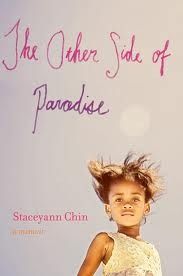
The Other Side of Paradise by Staceyann Chin (2009)
Staceyann Chin is a badass feminist lesbian Caribbean spoken-word poet and artist who in this memoir, tells her own story. When she was born, the only one who thought she’d survive was her grandmother. But then they were separated — and what followed was a string of homes, a need to survive, and a quest to find her voice as a lesbian and a performer. Chin writes well of her journey into adulthood and relentless attempts to silence her rebellious pushing against the norms and expectations impressed onto her. The book ends when she leaves the country.
Content warnings for child neglect, sexual assault, racism, violence.
Redefining Realness: My Path to Womanhood, Identity, Love & So Much More by Janet Mock (2010)
Janet Mock is writer, correspondent, and editor who came out publicly as a trans woman in 2011 after being a staff editor at People magazine for several years. This book is a memoir of her teen years that reflects on growing up in a family haunted by poverty and drug addiction, her sexual abuse as a child, her harassment in high school, and more. It is noteworthy as one of the first, if not the first, books written by a trans person who transitioned when they were young. This courageous and bold memoir is reflective of Mock’s advocacy and her success in telling her story and standing up for trans women of color and sex workers.
You may also know her through her work on Pose, the groundbreaking show that follows the lives of trans women and the queer community in the New York ballroom scene in the late 1980s. Mock is a writer and producer on the show. Her deal with Netflix in 2019 that gave them exclusive rights to her TV series and a first-look option on feature film projects made her the first openly trans woman of color to secure such a deal with a major content company.
Content warnings for transphobia, sexual assault, child abuse, gun violence, addiction, racism, racial slurs.
When We Were Outlaws: A Memoir of Love and Revolution by Jeanne Córdova (2011)
Activist-journalist Córdova writes in this memoir of a turning point for social change in the 1970s. In the book, Córdova works as an investigative reporter and creates magazine The Lesbian Tide, which will go on to become the voice of a national lesbian feminist movement. While her girlfriend and fellow protestor is pushing her to commit, Córdova’s first duty is to her movement, and she struggles to balance the demands of politics and love. It’s a vivid painting of the lesbian feminist world of the 1970s from the pen of an absolute trailblazer for the queer rights movement. After her death in 2016, Lambda Literary Foundation would establish the Jeanne Córdova Words Scholarship and the Jeanne Córdova Prize for Lesbian/Queer Nonfiction.
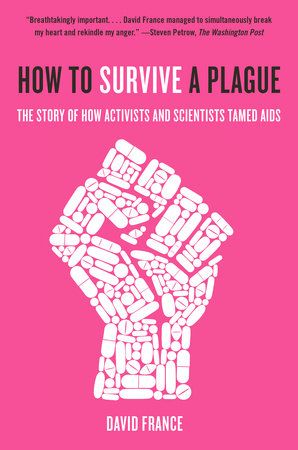
How to Survive a Plague: The Story of How Activists and Scientists Tamed AIDS by David France (2012)
This 640-page doorstopper of a book is the definitive story to check out to learn about the struggle to bring the horrors of the AIDS pandemic to a halt. Between the 79 pages of notes and the 16 pages of photographs and art, you know that France isn’t kidding around with this one. From his own personal story of coming to New York as a gay man in 1978 to the devastating impact of the virus to the biased news articles to the founding of ACT UP and TAG, France covers with incredible detail and heart the story of the activists, doctors, lobbyists, and more who fought against all the pressure and resistance of the system around them to find a way to stop this horror in its tracks. Just superb, and while it’s thick, it is more than worth your time.
Content warnings for terminal illness, death, ableism, medical trauma and bias, confinement, suicide.
I am Jazz by Jessica Herthel and Jazz Jennings, illustrated by Shelagh McNicholas (2014)
This children’s book features real-life transgender activist Jazz Jennings sharing her story. It is a story about a young girl born in the wrong body, who tries to communicate this to her parents at age 5, to no avail — until they bring her to a doctor who informs them that she is trans, and that it’s okay for her to be so. This is a great introduction for children into the idea of trans-ness, and it is based on Jazz’s real-life experience.
Readers do have some concerns with the book — gender roles are presented in a traditional binary, and people were puzzled as to why the protagonist is drawn much paler than Jazz’s real-life tone. But the book is a powerful one, and Jazz Jennings is an important figure in the fight for rights for trans children. I Am Jazz has been often challenged and banned, and just recently, the book was removed from some Florida classrooms after the “Don’t Say Gay” bill passed.
Content warnings for deadnaming, transphobia.
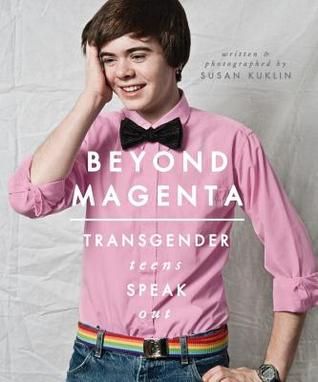
Beyond Magenta: Transgender Teens Speak Out by Susan Kuklin (2014)
Author and photographer Susan Kuklin met and interviewed six transgender or otherwise gender-nonconforming young adults, and in this book, shares their stories among portraits, family photos, and more, documenting their emotional and physical journeys. This book is a powerful and important one that helps bring the real experiences of trans teens to readers everywhere — it’s a must-have for any library as a reference for people to learn more about gender-nonconformity and help other young people know that they are not alone.
Content warnings for deadnaming, transphobia, child abuse, suicide attempt.
Asegi Stories: Cherokee Queer and Two-Spirit Memory by Qwo-Li Driskill (2016)
In the history of trans and queer studies, Indigenous cultures are often neglected or left out despite their long history of gender-nonconforming traditions. In this essay collection, the first full-length work to focus specifically on a tribally specific Indigenous queer or two-spirit identity, Driskill looks at how Cherokee culture and history has looked at and shaped gender identity, drawing from oral history and archives. “Asegi” translates as “strange” but is also used as a term similar to “queer” — “Asegi udanto” refers to people who fall outside of or mix men’s and women’s gender roles. This book is important for all queer readers seeking to decolonize their bookshelves, and a crucial contribution to the queer canon.
Content warnings for anti-Indigenous sentiment and cultural violence.
When We Rise: My Life in the Movement by Cleve Jones (2016)
Cleve Jones found his calling with the encouragement of Harvey Milk. After Milk’s death, he took up his cause, fighting for the rights of the gay community, only to see AIDS devastate his people. Written in Jones’s rich, funny, emotional voice, this memoir tells his story, from the lure of 1970s San Francisco to his passionate friendships and lovers to the devastating losses of AIDS. It includes his work as cofounder of the San Francisco AIDS Foundation. Since then, he has continued his work as a prominent queer activist, leading the 2009 National March for Equality, and working today as an organizer for hospitality workers’ union UNITE HERE.
The work also chronicles the birth of his creation, The NAMES Project AIDS Memorial Quilt, the largest community art project in history. On its first display in 1987, the quilt was the size of a football field — on its display in 1996, it covered the entire National Mall in Washington, DC. The quilt continues to grow but is too big to be displayed in its entirety. As of November 2019, the National AIDS Memorial is the permanent caretaker of the quilt, and it can now be seen online.
Content warnings for terminal illness, suicide, suicidal thoughts, addiction, police brutality, violence.
Velour: The Drag Magazine edited by Sasha Velour (2018)
Genderfluid drag queen Sasha Velour, a former Fulbright scholar and drag-historian and the winner of Season 9 of RuPaul’s Drag Race, is at the forefront of rebellious gender art. She is also director and host of drag revue NightGowns, which continually pushes at the expectations of gender and sexuality norms. This art book collects all three issues of drag zine Velour, created by her and by Johnny Velour, which features editorials, poems, collages, interviews, and more by 75 queer artists and drag performers from around the world — including queer, trans, AFAB, and nonbinary artists. The work in this book celebrates the breaking of boundaries both in mainstream and queer culture. What is “realness?” How do drag and trans-ness interact? And how can we push against an increasingly mainstream idea of what drag is, or should be? This book has so much to teach us about gender f*ckery, drag, the history of queer culture, and most important, the future of queer culture.
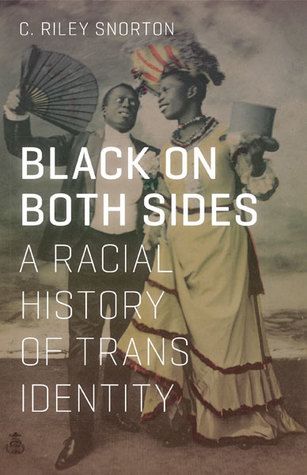
Black on Both Sides: A Racial History of Trans Identity by C. Riley Snorton (2017)
How did slavery, and the production of a racialized gender dynamic, provide foundations for a fluid understanding of gender? Snorton pulls on medical trauma and experimentation on Black women, midcentury Black trans narratives, Hollywood films, sensationalist journalism, slave narratives, and more to connect trans-ness and Blackness in ways that are inextricable. While it’s a richly academic book, sometimes a bit dense, Snorton’s book is lauded for being a crucial contribution into the work of queer and trans narratives.
Content warnings for racism, transphobia, medical trauma, suicide.
We Have Always Been Here: A Queer Muslim Memoir by Samra Habib (2019)
According to the world, Samra Habib doesn’t exist. They’re a queer Muslim, after all. The world doesn’t seem to believe those can exist. Pakistani Canadian author Samra Habib is noted for photography project Just Me and Allah that documents the lives of queer Muslims. Their writing and advocacy has been absolutely crucial for expanding the visibility of people who are trying to balance their queer identity with their Muslim faith and upbringing. We Have Always Been Here was an award-winning national bestseller, and has been included in curriculums around the world. Habib continues to travel and work with various queer organizations internationally to raise awareness about the issues that impact queer Muslims.
Content warnings for Islamophobia, sexual assault, suicidal thoughts and attempt, racism, child abuse.
The Stonewall Reader, edited by the New York Public Library (2019)
To celebrate the 50th anniversary of the Stonewall riot, Jason Baumann, New York Public Library coordinator of humanities and LGBTQ collections, edited a volume drawing from the NYPL archives that includes first accounts, diaries, newspaper articles, and more chronicling the years leading up to the riots and documenting the fight itself. It also spotlights iconic activists who were pivotal to the movement, giving room and space for the forgotten figures of the fight. It features a ton of diverse voices and interviews and helps to paint a crucial moment in queer history in the voices and contexts of the people who were there.
Content warnings for police brutality, violence, drug use, sexual assault, racial slurs, death, transphobia.
In the Dream House by Carmen Maria Machado (2019)
There is so much to say about In the Dream House, and not enough room to write it all. This genre-bending memoir explores the trauma of an emotionally abusive queer relationship while also using interludes to examine the small archive of chronicled abuse in the queer community. The memoir is innovative and inventive, a gothic world of horror and haunting. It’s on this list not only because of the valuable contribution of a brilliant queer memoir that breaks the rules of genre, but primarily for highlighting the reality of abuse in the queer community. Too often, as Machado highlights, queer people play down the realities of toxic relationships in order to paint queerness in the best possible light.
Content warnings for domestic, emotional, and physical abuse, gaslighting, sexual assault.
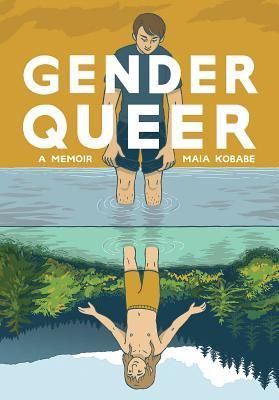
Gender Queer by Maia Kobabe and colorist Phoebe Kobabe (2019)
This vivid graphic memoir about moving through the world as a nonbinary person won an Alex Award and Stonewall Book Award. Maia Kobabe (e/em/eir) gifted us all with a book about eir journey of self-identity, from the pains of coming out as nonbinary and asexual and explaining eirself to family and to the world, to the traumas of being misgendered or having to go through extremely gendered norms and rituals, like pap smears. The book is now facing bans — in 2021, conservatives in Downers Grove, Illinois tried to demand that Gender Queer be pulled from the high school library, claiming it “exposed children to homoeroticism and pornography.” Gender Queer is a crucial book for gender-nonconforming and trans youth and teens to see themselves in, and a must-read for any and all readers in order to better understand the queer spectrum.
Content warnings for gender dysphoria, medical trauma.
Ace: What Asexuality Reveals About Desire, Society, and the Meaning of Sex by Angela Chen (2020)
Asexual and aromantic people are often dismissed or erased from the spectrum of queerness. Angela Chen’s book is key to the fight against that erasure. This accessible guide to asexuality shows not only a window into the experience of being asexual, and the ways it is pathologized, biased against, and misunderstood, but also the ways that looking at asexuality with a new perception of what sexual attraction really is can shed new light and nuance on the way we view consent, compromise, and the structures of relationships. Disabled aces, aces of color, gender-nonconforming aces, and more are featured in this collection of interviews, cultural criticism, and personal essays.
Content warnings for acephobia, ableism, rape and sexual assault, racism, transphobia, violence.
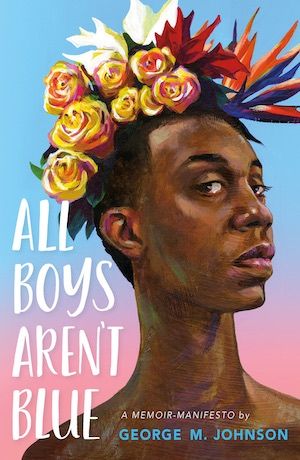
All Boys Aren’t Blue: A Memoir-Manifesto by George M. Johnson (2020)
“Navigating in a space that questions your humanity isn’t really living at all. It’s existing. We all deserve more than just the ability to exist.” In this powerful series of personal essays, queer activist and journalist George M. Johnson writes about their own queer coming of age, a young-adult memoir meant as a manifesto for Black queer boys and as a call-to-action for all teens to be allies.
The book deals with issues of homophobia, consent, sexual assault, and agency. It has been removed from school libraries in several states, and Johnson is working to get free copies into resource centers and Little Free Libraries across the country. The nonbinary writer was included in The Root‘s 100 Most Influential African Americans in 2020. Gabrielle Union reportedly is working to develop the book into a series.
Content warnings for sexual assault, statutory rape, death, racism, deadnaming, transphobia.
How We Fight for Our Lives by Saeed Jones (2020)
A friend told me, before I read this book, that it was best read in one sitting. She was right — largely because it is impossible to put down. The powerful, honest, and lyrical memoir is about all the violence that has been leveled against him over the years for being Black and gay, but also about love and survival, and about his complex relationship with his mother and grandmother. It is raw and lush, a book about loss, trauma, grief, and coming-of-age. The writer and poet won the 2019 Kirkus Prize for Nonfiction, the 2020 Stonewall Book Award/Israel Fishman Nonfiction Award, the 2020 Randy Shilts Award, and a 2020 Lamba Literary Award, among others, for this memoir.
Content warnings for racism, death.
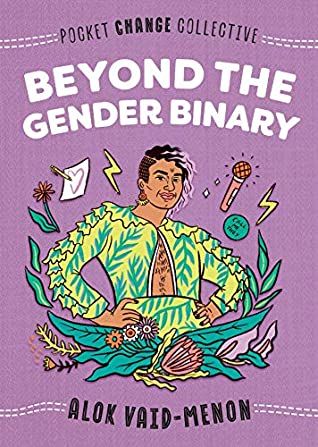
Beyond the Gender Binary by Alok Vaid-Menon, illustrated by Ashley Lukashevsky (2020)
Vaid-Menon, or ALOK, is a writer, public speaker, mixed-media performance artist, social media phenomenon, and creator of the #DeGenderFashion movement with more than 1 million followers on Instagram. Their impact on breaking the gender binary is impossible to overstate. Their art calls for freedom from constraining gender norms, advocating body diversity, gender neutrality, and agency. In this book, the poet challenges the world to see gender in a full-color spectrum, clarifying misconceptions that people have about the gender-nonconforming community, and sharing their own experiences coming of age as someone who doesn’t fit into classic, restricting gender norms. It’s a short book, which makes it a perfect primer for all readers.
Content warnings for transphobia, body shaming, misogyny, suicide, racism, sexual violence.
Queer Love in Color by Jamal Jordan (2021)
This book began as an essay in The New York Times, in which digital editor Jordan lamented that growing up, he thought all gay people were white. “How can you believe in something you’ve never seen?” He asked, and set out to show representations of long-term, dedicated Black love, featuring couples in all their realness, sharing their love stories and the obstacles they’ve made it through. This essay project quickly blossomed into a larger effort that fills up this gorgeous book. Queer people of color have often been erased and decentered in media depictions of queerness. Jordan wanted to fix that. This book collects photos and stories of 200 queer couples and families of color from around the world — and they have a wide range of ages, bodies, and gender expressions to boot. Queer Black love is so crucial for young queer people of color to see — to know it’s possible, it’s there, and it’s a version of their own future.
Between Certain Death and a Possible Future: Queer Writing on Growing up with the AIDS Crisis edited by Mattilda Bernstein Sycamore (2021)
Much of the storytelling and scholarship around the AIDS crisis features either the generation of adults who suffered through its first devastating wave, or the people growing up in an age where HIV is preventable. This collection brings together more than 35 essays that reckon with the generation in-between: the queer people who blossomed, came up, or grew up in the midst of the HIV pandemic, who came into their own believing that queerness meant death. How did anti-Blackness, classism, and overwhelmingly white and cis media representation of the virus make it hard for young queer people of color to stay safe in the crisis? How did young people react to coming out at the time — denial, recklessness, hostility, overwhelming fear? How did the arrival of PrEP usher in a “Second Silence” or new invisibility for those struggling with HIV? This book opens up new and absolutely crucial questions about the HIV and AIDS crisis both then and now.
Content warnings for suicide, terminal illness, transphobia, violence, rape, addiction, substance abuse.
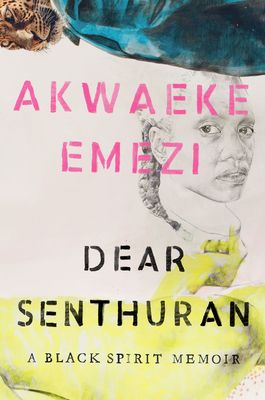
Dear Senthuran: A Black Spirit Memoir by Akwaeke Emezi (2021)
Emezi first took our literary world by storm with their award-winning book Freshwater, an autobiographical story about an ogbanje — a spirit born into a human body. But it was a masked version of Emezi’s own story, and with Dear Senthuran, they wanted to do more than that. “This book is what I look like when I’m not translating myself to become accessible or legible,” wrote Amezi in a letter to readers. Each chapter in the book is written as a letter to a loved one in Emezi’s life. They write about their experience, from using stories and fantastical worlds to escape the 1993 civil unrest in Nigeria with their sister to the unapologetic and authentic story of their journey as a nonbinary, trans ogbanje. The book recently won the 2022 Stonewall Book Award for Nonfiction, and is vital for Emezi’s bold voice and their representation of a distinctly non-Western identity that has challenged many readers to broaden their thinking around identity.
Content warnings for suicidal thoughts and attempt, suicide, transphobia, medical trauma, sexual assault.
Poetry
If Not, Winter: Fragments of Sappho, translated by Anne Carson (3rd and 2nd centuries, BCE)
Queer women love Sappho. After all, “sapphic” has come to mean an attraction or relationship that’s between two women, and “lesbian” is derived from her home island of Lesbos. Little is known about Sappho’s life for certain, but we do have fragments of her poetry. Legend says that the poetry is so fragmented because of attempts to destroy it, but it’s possible that it was lost simply because it wasn’t copied and so didn’t survive. Her queerness has naturally been debated, and many early translations portrayed her objects of desire as male, but today, she’s seen as a sort of patron saint of lesbians, a symbol of early desire for women. Poet and classicist Anne Carson translates Sappho’s fragments in this volume, using brackets and white space to make it clear to the reader where parts are missing.
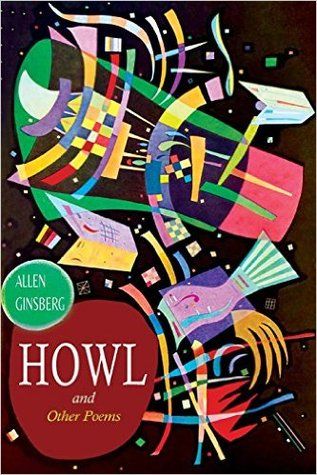
Howl and Other Poems by Allen Ginsberg (1956)
Ginsberg is well-known as one of the iconic Beat poets, and this collection includes much of his finest work, from “Howl” to “Sunflower Sutra.” The title poem contains many references to drugs — as well as to sexual experiences with both women and men. In 1957, 520 copies of the poem were seized and burned; later that year, bookstore manager Shig Murao was arrested and jailed for selling the book to an undercover police officer, and City Lights publisher Lawrence Ferlinghetti was arrested for publishing it. Ferlinghetti was supported by the ACLU in the obscenity trial, in which the California court cleared the publisher, judging that the poem was not without “redeeming social importance,” and drawing on a precedent set by the attempt to ban Ulysses by James Joyce.
This verdict set a precedent allowing for several other previously censored works to be published. It was a launching point for the Beat poets, but was also crucial for establishing the idea that a homosexual work could not be banned on grounds of obscenity if it had redeeming social importance and did not have a “substantial tendency to deprave or corrupt its readers.”
Content warning for racial slurs, drug use, death, alcoholism, addiction.
The Dream of a Common Language by Adrienne Rich (1978)
One. of the most widely read and influential poets of the 20th century, Adrienne Rich was a powerful feminist and lesbian poet and professor. When she split the 1974 National Book Award for Poetry, she brought Alice Walker and Audre Lorde, two other nominated feminist poets, on stage with her to accept it on behalf of all women. The Dream of a Common Language incorporates her first poems to directly deal with her lesbian desire and sexuality, after beginning a relationship with Michelle Cliff, who she would be with until her death. She is a fantastic poet and a revolutionary queer icon who never stopped fighting against misogyny, racism, and homophobia, both within and outside of the feminist movements.
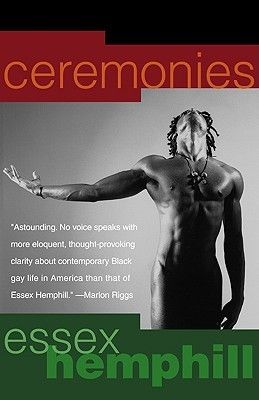
Ceremonies: Prose and Poetry by Essex Hemphill (1992)
This collection of poetry digs into issues of race, sexuality, gender, class, and violence, and is tragically out of print, and absolutely should be back in print. Ceremonies was his first full-length collection. It addresses the sexual objectification of Black men in white culture, the HIV and AIDS pandemic in the Black community, and more, digging into loneliness, pain, and other aspects of the truth of being both Black and queer. He addressed the impact of AIDS in his work of the mid-1980s, breaking new ground and bringing him significant national recognition. He’s known for his work in spoken word poetry and documentary, and died of AIDS-related complications in 1995.
Directed by Desire: The Collected Poems of June Jordan (2007)
June Jordan wrote as a divorced single mother and a bisexual woman. She founded the “Poetry for the People” program in 1991, and was dedicated to respecting and using Black English (known now as AAVE) in her work. Her poems dealt strongly with privilege, identity, womanhood, and Blackness. This collection, released after her death, gathers her life’s work to terrific effect, gathering all her best work from 10 different volumes as well as 70 previously unpublished poems that she wrote while dying of breast cancer.
Controversially, in 2005, Directed by Desire won in the category “Lesbian Poetry” at the Lambda Literary Awards, despite Jordan identifying as bisexual. This led to a campaign led by BiNet USA that eventually succeeded in establishing a Bisexual category.
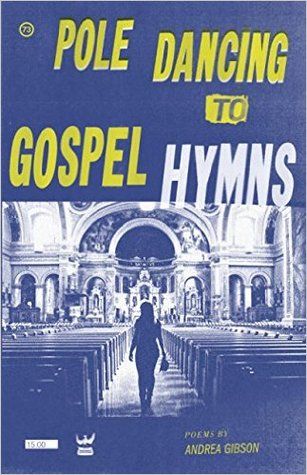
Pole Dancing to Gospel Hymns by Andrea Gibson (2008)
This stunning collection of energetic poems dives into Gibson’s life in a way that has their words leaping off the page. Which makes a lot of sense: nonbinary poet Andrea Gibson has their origins in spoken word and slam poetry, and they’ve said that every word they write is meant to live out loud. They write about their gender identity, gender norms, politics, and more. In addition to their impact in the queer world, their perspective has been crucial to the world of the chronically ill — they have talked about their Chronic Lyme Disease diagnosis and were diagnosed with cancer in 2021.
Content warnings for rape, self-harm, suicidal thoughts, child death.
Beast Meridian by Vanessa Angélica Villarreal (2017)
Villarreal’s work focuses on the experience of first-generation immigrants, pop culture, and transnational feminism. In this incredible poetry collection, she focuses on being a queer immigrant daughter, on dealing with racist and sexist violence in her young life, which led to psychiatric hospitalization. She touches too on her cultural trauma and healing. She writes of conservative classism, assimilation, of the death of her grandmother from preventable cervical cancer, and so, so much more. This powerful poet has reached the hearts of many queer women of color.
Content warnings for racial slurs, sexual violence, violence.
Don’t Call Us Dead: Poems by Danez Smith (2017)
“some of us are killed in pieces, some of us all at once // do i think someone created AIDS? maybe. i don’t doubt that anything is possible in a place where you can burn a body with less outrage than a flag”
This superb collection of poems is about Black boyhood, the threat of police, queer sexuality, the reality of living with HIV, and so much more. Smith is a rising cultural icon, genderqueer, nonbinary, HIV-positive, a funny, tender voice, and if you ever get the chance to hear them read their poetry live, you absolutely must. At age 29, Smith was the youngest recipient of the Forward Prize for best poetry collection. They are a founding member of the multigenre multicultural Dark Noise Collective, which also includes Fatimah Asghar, Franny Choi, Nate Marshall, Aaron Samuels, and Jamila Woods. Danez Smith is one of the poets of our times. Listen up.
Content warnings for racism, racial slurs, police brutality, gun violence, child death, fatphobia.
Bury It by Sam Sax (2018)
In the summer of 2010, a series of deaths by suicide by young gay men shook the queer and activist community. Many of the deaths were a result of harassment and bullying, or even forced outing and violence, by their peers. The event was a reminder and wake-up call to the reality of psychological and emotional suffering that too many queer teens face. This collection by Sax begins with poems that were written in response to that flood of deaths by suicide. The book explores loss, grief, pain, exploring in raw verse the need for survival, mediating on personhood and desire. Sam Sax is a queer, Jewish poet and educator. Bury It won the James Laughlin Award from the Academic of American poets.
Content warnings for addiction, alcoholism, death, suicide.
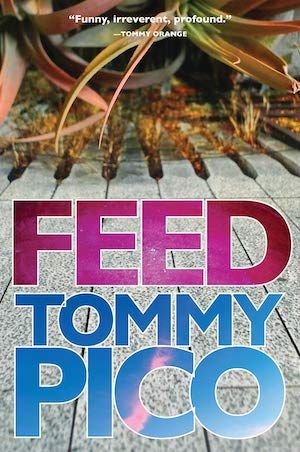
Feed by Tommy Pico (2019)
Young, queer, and Indigenous: in this nourishing poem, the narrator walks through New York’s High Line, digging into his own psyche, trying to figure out what’s next. What does it mean to be lonely, and can you ever be friends with an ex? This stream-of-consciousness poem packs in everything from heartbreak to climate change to Beyoncé, a dizzying work that encapsulates something rich and beautiful about the queer experience today. Pico is founder and editor-in-chief of antiracist and queer-positive collective, small press, and zine birdsong, and has since been co-curator of reading series Poets With Attitude with Morgan Parker, co-host of podcast Food 4 Thot, and contributing editor at Literary Hub.
Content warnings for disordered eating.
The Tradition by Jericho Brown (2019)
These rich, lyrical poems on love, violence, safety, resilience, and danger, are impossible to shake off, even after the final line has been read and the book has been reshelved. Every poem has something in it to stick in your chest, as Brown digs into collective pain and violence, into Black death and police brutality, into the Black body, trauma, living with HIV, the environment, and so much more. Jericho Brown is the first gay Black man to win the Pulitzer Prize for poetry.
Content warnings for police brutality, racism, rape, mass/school shooting, domestic abuse.
For more LGBTQ+ reads, check out Laura Sackton’s list of the 40 best queer books, my list of 20 must-read queer books in translation, or dig into our LGBTQ archives.
